- Skip to main content
- Skip to primary sidebar
- Skip to footer
The Boat Galley
making boat life better
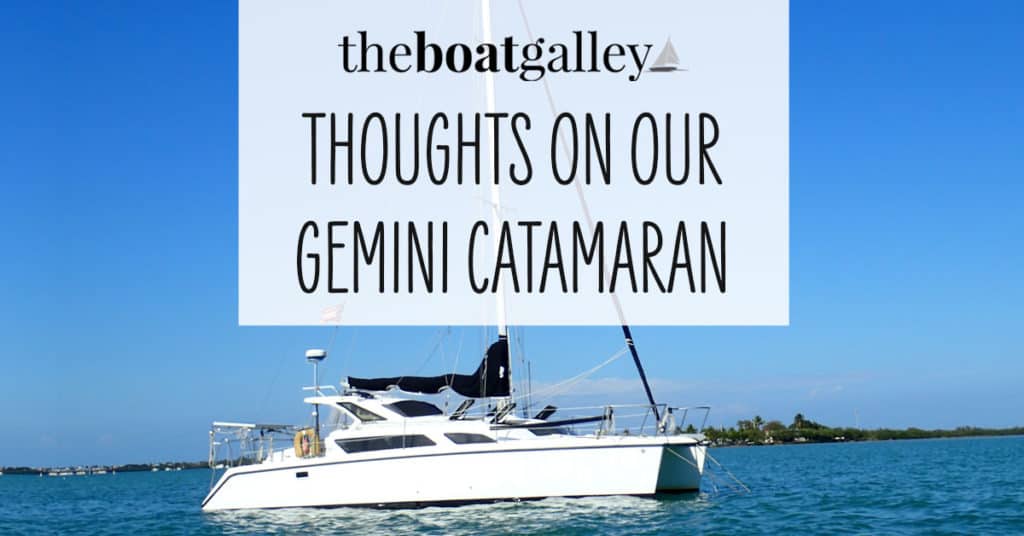

Our Gemini Catamaran
Published on May 18, 2015 ; last updated on June 20, 2020 by Carolyn Shearlock
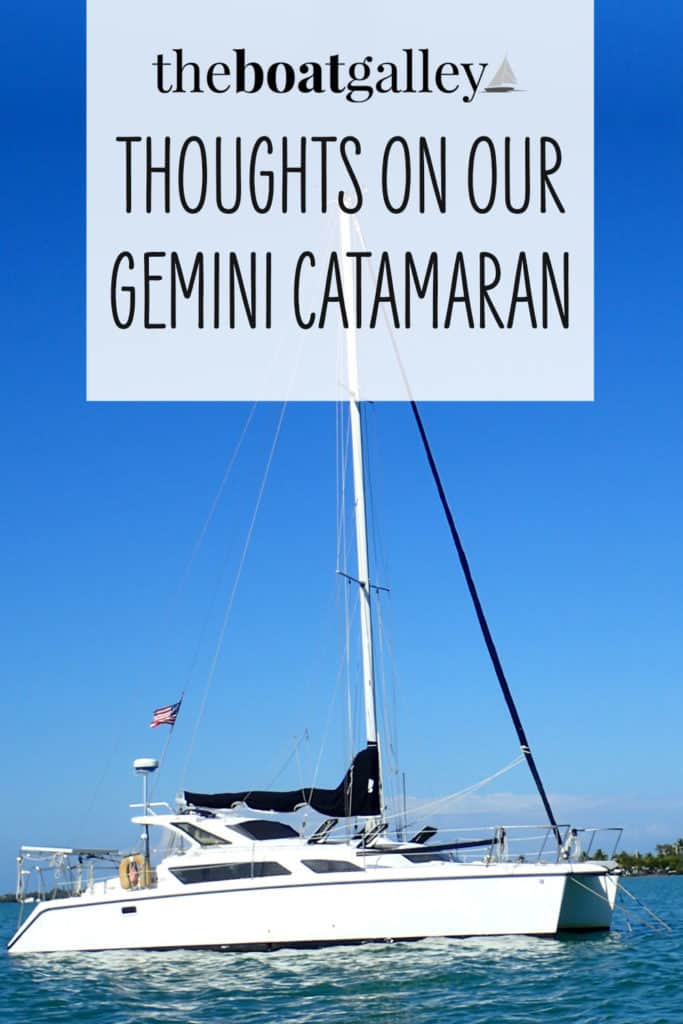
We’ve had a number of questions on how we like our Gemini catamaran or how was it to go from our previous boat — a monohull Tayana 37 — to it. Here’s our listing of the pros and cons.
In a nutshell, we LOVE our Gemini catamaran for what we are now doing — two people living aboard full-time, coastal cruising in the Florida Keys and going to the Bahamas for several months at a time. But I’m not going to say it’s the perfect boat for everyone.
Okay, with that out of the way, there are a few things that we need to say:
- The Tayana 37 is a true blue water boat. The Gemini is a coastal cruiser. They are very, very different boats and designed for different purposes.
- Because of that, it’s almost impossible to truly compare them.
When we bought the Tayana ( Que Tal ), we didn’t know if we’d cross the Pacific, but thought we might (we didn’t). We wanted a boat that left the possibility open. The Tayana did well for us in the Sea of Cortez and down the coast to El Salvador, but the reality is that the Gemini would have been great, too. Probably better.
Things that we particularly like about the Gemini ( Barefoot Gal is a 105M):
- The living arrangement. It’s just a good layout for us, with a large “living room” (settee and table). The whole boat is much lighter and brighter, too. We also like the fact that the cockpit opens right into the living area, without going up and down stairs all the time. It’s also easier to get into and out of the queen berth (side entry) as opposed to the V-berth on the Tayana.
- Huge cockpit. It’s great for entertaining or even just the two of us, with room to actually walk around. The Tayana 37 has what’s referred to as an “offshore” cockpit, meaning it’s very small so that if a wave breaks into the cockpit it won’t sink the boat. But that means that it’s a very tight fit for four people. The Gemini is a much better layout for having people over. When we bought Que Tal , we underestimated how much we’d use the cockpit for things other than just steering the boat.
- Maneuverability. The Gemini is so much easier to handle in close quarters, it’s not even funny. The drive leg makes it like having an outboard, in that you steer it as well as the rudders. The Gemini is also technically 3 feet shorter than the Tayana (34 feet vs. 37) but with the Tayana’s bowsprit, it’s more like 8 or 9 feet shorter in reality. The lighter weight of the Gemini also makes it much more responsive. And any full keel boat such as the Tayana, in the words of another Tayana owner, “backs like a drunken elephant.” In other words, you don’t have a clue where it will go. Less freeboard on the Gemini also makes it easier to pick up a mooring ball both as it’s easier for the person at the helm to see it and much easier for the person at the bow to pick it up. The stress level on the Gemini as we approach a fixed object (dock, bridge, lock or even a mooring ball) is so much less than on the Tayana. The ease of getting underway/returning resulted in us going for a lot of short (1 – 2 hour) daysails. We had no idea how much this one factor would contribute to our enjoyment of the boat — and we’ve both always loved boating!
- Ease of sail handling. The Gemini’s sails are considerably smaller than the Tayana’s and the boom is much lower to the coach house roof. It is so much easier to raise/roll out the sails and stow them again, and the spinnaker is also a much more manageable size and has a larger wind range. We never wonder if it’s worth the effort to set the sails, even for a short trip. We’re not getting any younger, either (Dave is 77 and I’m 55): easier sail handling and a smaller anchor mean we’ll be able to cruise longer.
- Speed. Despite being smaller, the Gemini is considerably faster under sail and power. Our one-day range is considerably expanded. We can sail a lot more both as we move at a reasonable speed even in light winds (the drive leg pivots up out of the water easily to decrease drag) and we can afford several hours of light-air sailing and still make our intended anchorage since we typically motor at 6 knots versus 4.5 knots on the Tayana. Believe it or not, the Gemini sails slightly closer to the wind than our Tayana.
- Shallow draft. Draft was never a big issue in the Sea of Cortez or along the coast of Mexico and Central America. But it is in Florida and the Bahamas. Our Tayana theoretically drew 6 feet but loaded for cruising it was probably closer to 6½ feet. The Gemini draws about 2½ feet with the centerboards up but the drive leg and rudders down. We can go lots of places that many other boats, including a lot of catamarans, can’t. And we like to explore off the beaten path. A related factor is that our bridge clearance is just 45 feet, also giving us the freedom to go places some others can’t . . . and we have a lot less stress going under those 54 and 55 foot spans!
Bottom line is that for what we’re doing , the Gemini catamaran is just plain a fun boat. But I want to emphasize the “for what we’re doing.” Should we decide that we want to go to the Virgin Islands, we won’t have the option of going offshore — we’ll have to island hop down (yes, I know a few Geminis have gone offshore but I’ve also read their accounts).
To keep the speed and maneuverability that we like, we have to watch how much we load on board — and that means that we can’t carry as many provisions. The guest arrangements are great if one person comes, bad for more (what’s billed as a double berth is 4″ narrower than a double bed). The galley arrangement isn’t quite as good, but it’s not at all unworkable. Finally, the motion of a catamaran is different than a monohull. Not necessarily bad but it does take some getting used to if sailing in chop.
The holding tank is small at 18 gallons. After a year of cruising, we switched to a composting head ( read more about our reasons here ).
Our Gemini is an “M,” built in 1999 towards the end of the “M” series and has many features of an “MC” such as composite centerboards instead of plywood. The MC has many features that we’d like but the available ones at the time of our purchase were out of our budget.
The current model is the “Legacy” and it is totally redesigned with the interior layout changed slightly and, most importantly to us, skegs instead of centerboards. While the skegs are lower maintenance and require no effort while underway (versus having the lower a centerboard if sailing above a beam reach), we like the improved windward performance that the centerboards bring over a skeg.
Everything is a tradeoff. We are extremely glad that we decided on a Gemini as we absolutely love it. Some of the things that we love about it — such as the speed — are fairly typical of catamarans as opposed to monohulls, while other items are more specific to having a small catamaran or even to the Gemini (maneuverability).
I’ve been asked a few times if we intend to get a larger boat now that we’re going to be living aboard full time. You’ve probably already guessed that our answer is no — the Gemini catamaran is big enough for our needs and its small size leads to many of the things that we like about her. Within reason, smaller is just easier . . . and costs less too!
- Calculate Your Boat Fuel Range
- Do You Need a Watermaker?
- Seven Things About Cruising the Bahamas
- 🎧What’s a Day Like?
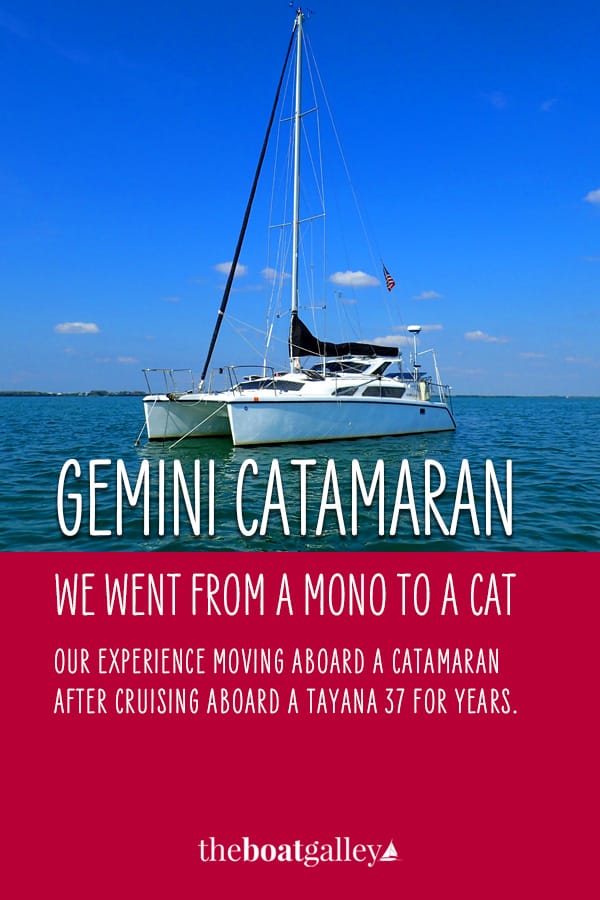
And check out our other courses and products

Find this helpful? Share and save:
- Facebook 979
- Pinterest 150
Reader Interactions
Lori Steinbrunner says
May 18, 2015 at 11:26 am
Couldn’t’t agree more. We also love our Gem.
Janet Lettrich says
May 18, 2015 at 11:56 am
This was a very informative comparison. Thank you!
The Boat Galley says
May 18, 2015 at 12:04 pm
Some of the differences we expected, such as the living arrangement and the large cockpit. But we didn’t realize how much easier she’d be to “move” — whether by motor or sail. And that’s turned out to be a big part of why we love her!
May 18, 2015 at 1:00 pm
I have only ever sailed monohulls. I am looking to live aboard in the next few years. I was considering a boat like your former one for the same reasons – like leaving the possibility of ocean crossing open. Still open to all possibilities, which is why your post gave me a lot to consider. Thanks again.
Mark Sierakowski says
May 18, 2015 at 1:11 pm
Rik Dove, food for thought, if you aren’t going around the world.
Jennifer Kelly Majoros says
May 18, 2015 at 1:30 pm
We wouldn’t trade our Gem either. Love it!
Connie Watkins Weaver says
May 18, 2015 at 1:37 pm
Thanks for the accounting! Very helpful!
Mary Facker says
May 18, 2015 at 2:06 pm
How much of a factor were tramps when you picked the Gemini? I love everything about it, except for I have this dream of laying out on the trampolines, and I’m not sure I can give it up. How much do you think you’d use them if you had them?
Carolyn Shearlock says
May 18, 2015 at 4:18 pm
We’ve been on some cats with tramps (friends’ boats) and didn’t use them as much as we’d envisioned. So we didn’t really consider them (or the lack of them) in picking the Gemini. I don’t think (I may be mis-remembering) I’ve seen any of the small cats with them — they just need the space for living quarters and storage. Probably the biggest thing is that since it’s solid up from, there is more wave slap when you’re beating. We don’t find it too annoying, but some people hate it.
Bob Kimble says
March 25, 2016 at 8:13 am
I too had wanted tramps when I bought my Gem, but the hard foredeck turned out to be a blessing in disguise. It was the perfect place for morning sun salutes.
Rik Dove says
May 18, 2015 at 9:10 pm
True. And I agree with the thought. Problem is… Dikenga and I have been through so much. She is family. I could never bring myself to sell my Tayana
May 19, 2015 at 7:57 am
Sounds like a perfect boat for the Keys. We had a 30′ Iroquois for 14 years with a trampoline and while the kids loved it, it made the boat wetter going into heavy seas. I’m thinking too, now that I’m older, it wouldn’t be as stable a platform for foredeck work. We moved up to an Island Packet catamaran 8 years ago with a solid foredeck. It’s very dry( has a pod to break waves) but there is slap at anchor if there’s a heavy chop( no fun on any boat, either). What’s nice about the Gemini and Island Packet is they usually fit into a conventional slip, being 14 and 15 foot beam, respectively. The cockpit is another “room” for us. Thanks for your thoughts on your model. We sailed a Legacy last summer as a demo, but could never afford a newer one.
Mark Krajcar says
May 27, 2019 at 10:56 am
I looked at the Gem’s and ruled them out for several reasons. I did find 2 of the IpY Packet Cat 35’s for sale and a friend and I each bought one of them. I’m getting ready to head off this year, circumnavigation and would love to connect with you. Perhaps Carolyn can assist us if you’re interested.
I emailed re the name of a product you’d recommended and I couldn’t remember. You got back to me in a day! I was very surprised and happy. Thank you so much.
Judy Richterman says
May 19, 2015 at 8:56 am
What a good comparison! We’ve been living aboard our Cal 39 in the Leewards since November 2014, and I have enjoyed the luxury of space and light when I visited friends with large catamarans. It didn’t occur to me that we could find a catamaran with maneuverability and a size that would be comfortable for gunk holing in the Chesapeake and the Florida Bay. My husband got very excited by your article. You’ve planted a seed for our next stage of cruising a few years down the road.
Tim Sheahan says
May 19, 2015 at 2:16 pm
Do you have problems with stress cracks,..a friend has one and has cracks along all his shrouds and basically all around the deck, everywhere anything is bolted thru.
May 19, 2015 at 6:43 pm
The gelcoat is a problem area on the Gems. Ours is chalky and has a lot of crazing. The company swears that it’s not structural and that is how it seems on all that we’ve seen and owners we’ve talked to — not pretty but not structural.
May 19, 2015 at 7:58 pm
Right, we’re doing his this fall, just curious if it was universal.
David Ditacchio says
May 19, 2015 at 6:07 pm
After owning our Gemini 105M for 15 years, we are putting it up for sale. It has been a great boat to own and we have had many great trips with it. We will miss it and all the great Gemini sailors that we have met over the past 15 years.
Happy/sad time.
Gregory Allen says
October 26, 2015 at 12:57 am
I have been hearing about the gemini so much that for the last year I have been researching every thing about this cat and the more I read the more I am looking forward to purchasing my own. I’m in love with it and have not even chartered one yet.
December 1, 2015 at 11:30 am
We bought our Gemini 105M from PCI in 2000. It’s been a great boat and we have had 16 years of great sailing. Health issues and age are catching up with us so we are putting our boat up for sale. We are spending this winter in Cocoa Village, FL.
December 1, 2015 at 3:53 pm
Glad to hear of your many fun years aboard! It must be a tough decision to sell her . . .
April 6, 2017 at 7:37 pm
Did you end up selling it ? Looking for a 105M Joe
December 15, 2015 at 9:41 pm
I’m looking at getting a Gemini legacy 35 for a live aboard and possibly some blue water sailing. What would be the pros and cons of this type of sailing occasionally. I have 2 children that will with me so accommodations should be just right.
March 24, 2016 at 6:14 pm
Those of you who are considering a Gemini:
Have a look at the Canadian-made “Tomcat.” We looked at one at Miami Boat Show and were very impressed. Very like the Gems, yet to us, better thought out. If we were in the Gem market we’d seriously consider them.
March 24, 2016 at 6:39 pm
We saw them 2 years ago and were also impressed. However there are almost none available used, and the backlog for new ones is several years long. Or at least it was then.
Jennifer Good Spires says
March 24, 2016 at 11:05 pm
I sure love mine. I can hardly wait for spring!
Dan N Jaye says
March 24, 2016 at 11:13 pm
Interesting, Carolyn; we’re not looking to trade boats any time soon but you make good points.
Michael McIntosh says
March 25, 2016 at 1:18 am
How many degrees off the wind will she sail?
March 25, 2016 at 12:00 pm
50-ish, depending on sea state. Smooth water, closer than that.
March 25, 2016 at 1:26 am
Love our Gem, nearly 5 years and counting…
Kimberly Fain Ward says
March 25, 2016 at 7:14 pm
We love ours, too! Paula L Mueller, did you see this?
Paula L Mueller says
March 26, 2016 at 2:22 am
I had read it before and just read the whole thing again ?
March 26, 2016 at 2:25 am
Courtney Cali T says
March 26, 2016 at 10:43 am
James Tex Kilburn says
March 26, 2016 at 10:46 pm
I’m currently refitting a Gemini 3000. We’re very pleased with her performance as a Costal Cruiser and plan on upgrading to a 105 in a few years!
werner thomas says
June 9, 2016 at 9:48 am
hi great comments evaluating your cat. The small cats do it for me too, I now have a Catalac 10m after my first cat a Wharram Tiki 30! The centerboard set up ibdeed better upwind sailing but so much weaker in gunkholing! It is amazing how these under 35 foot cats have such large living areas. I would not howecer use a Gemini where I am cruising with my Catalac because no chandlers, no technical backup. My Catalac can take quite a knock which leseer strong cars wpuldnt survive. Imagine hitting an old bridge head thats completely dubmerged and nowhere indicated on charts but in major river gere in Mozambique. Great blog keep it up, I admire those bloggers that entertain/inform us so well.
Dan Rupli says
June 17, 2016 at 5:03 pm
I love the whole idea of the Gemini 35, but will always want to go around the world at least one time. Is there no compromise between catamaran comfort and Tayana blue water capabilities?
June 17, 2016 at 7:51 pm
There are definitely boats that are in between . . . some of the 40-foot cats and some of the lighter monohulls. No boat can be everything, though, so you have to decide what’s important for you.
June 20, 2016 at 1:42 pm
Thanks for this insightful article. I am one of many investigating/considering the Gemini – I’m curious whether you found yourself sitting on the combing when handling the wheel? I had not realized the other advantages you pointed out regarding visibility/convenience in handling.
June 20, 2016 at 3:34 pm
We rarely hand steer — only when doing close quarters work. The rest of the time we let the autopilot do it’s thing. But yes, we usually sit up on the “upper level” on the side of the cockpit.
mikeoore says
August 14, 2016 at 9:53 am
Great article. We are close to a boat purchase and liked both the gemini cats and my lifelong favorite, the Tayana 37. Being so different, and generally for different purposes, it was hard to make a choice. Your story helprf. Thanks
August 14, 2016 at 10:17 am
We really like both, but they are very different boats and best suited for different types of cruising. Glad you found the comparison useful!
Brian Kepner says
July 21, 2017 at 6:54 pm
Hope Gemini sends you some swag for this article.. I might consider one if I ever see one up here in the PNW. Cats are very uncommon up here.
Charles Dalesch says
July 21, 2017 at 10:21 pm
Scott Taber time to get a cat
Diane Mercaldo says
July 21, 2017 at 10:38 pm
Nice to have the added living space that is lighter and brighter. Bridge heights, OH YOU’RE SO LUCKY,I’m jealous and depth is no longer a factor, CONGRATULATIONS, enjoy and safe sailing!
Paul English says
July 21, 2017 at 9:13 pm
I’m still struggling with the whole “blue water” distinction – and I realize it is not necessarily razor sharp.
What features did your mono have that made it blue water, that the Gemini doesn’t?
Does the Gemini itself preclude blue water from your perspective – like you wouldn’t consider an Atlantic or Pacific crossing with it? Or would you consider it with (presumably pretty expensive) modifications?
And a more general question – do you think you would have been ultimately “equally open” to blue water sailing by purchasing a non-blue-water boat to start with, then simply traded up when you were ready and certain that you were going to cross an ocean?
July 22, 2017 at 7:11 am
It has a lot to do with build strength. The Tayana has a much thicker and heavier hull that would be much harder to hole. The deck to hull joint is also much “beefier.” Chainplates are attached with more bolts and are themselves larger. Winches were oversized. Water and diesel tanks were much larger. It’s also a heavy displacement boat and comfortable (well, relatively!) in large seas. It’s also things like the size of cleats, having secure places to clip in on deck and a protected cockpit.
I know of one Gemini that circumnavigated (Slap-Dash) and while they beefed it up before they went, they did major repair in most of the big cities they hit along the way.
The designer of the Gemini took one across the Atlantic — again, with modifications.
The thing about crossing an ocean is that you don’t know what weather you’ll encounter and your boat has to be okay to handle large seas. Now, we could island-hop through the Caribbean, where we’d have numerous open water passages — but most just about 100 miles long. That’s a single day. You can get a pretty good weather forecast for the next 24 hours so even “unexpected” conditions aren’t going to have the huge seas that would be a problem.
So, while others may have crossed oceans in a Gemini, I wouldn’t.
As to your more general question. I think when we began cruising (2002), there weren’t the blogs and Facebook that showed people cruising on a smaller scale. Most information came from circumnavigators — or at least ocean-crossers — in books and Cruising World. So our initial thoughts were that we’d be like all those folks . . . and wanted that type of boat.
July 22, 2017 at 2:53 am
July 22, 2017 at 4:00 am
Totally agree! We love our Gem too!
Steve Barnes says
July 22, 2017 at 4:01 am
What’s your hull number? We are a 1999 M #651 and have wooden boards. In good shape now, but was a pain restoring them after barnacles got through the paint and water rotted several spots.
July 22, 2017 at 10:34 am
We’re 655, just 4 after you.
July 22, 2017 at 12:49 pm
Consider yourself lucky!
Thom Hounsell says
July 22, 2017 at 10:53 am
Nice analysis. Thanks!
Pam Carr Jackson says
July 22, 2017 at 2:39 pm
Doug Jackson and I had an Island Packet then bought a sailing catamaran (a Lagoon). Agree with everything stated regarding the benefits of a cat vs monohull!
July 22, 2017 at 5:08 pm
Love our 2004 Gemini 105Mc, s/v Ally Cat! She took us from MA to Grenada and back and now we are LOVING exploring all the skinny water aournd us in Buzzards Bay!! Found the most beautiful spot on Nantucket a couple weeks ago…anxious to see where we ‘discover’ when we go out again for a couple weeks in August 🙂
Lorraine Steyn says
July 22, 2017 at 9:26 pm
I just hate the motion of a catamaran, that jerky motion in chop. Spoiled the sailing for me, despite the pleasures of more space for a live-aboard life
Steve Olson says
July 24, 2017 at 3:28 am
Oh man, I’ll never go Cat. I’d much rather have the T37!!
Smith Angie says
May 15, 2018 at 2:47 am
Thanks for sharing this information.It’s very usefull for me
George Poole says
August 18, 2018 at 9:02 am
This is an Excellent review – Thank you so much for the information.
All the best to you
Frank and Cindy says
August 22, 2018 at 9:35 pm
All these years later and this post is still drawing comments! Thanks for sharing your thoughts on the Gemini! We love our 105mc #816. S/V Mavis. I’ve been reading your stuff for years when owning a Gemini was just a dream! Fair winds and keep posting!
Thomas Pierquet says
September 18, 2018 at 11:03 pm
I am wondering what the boat speed is cruising at 2000,2500,and 2800 rpm respectively. I heard someone claim 8kts at 2800rpm. Is this possible? Or is that a stretch? I presently have a Beneteau 311 (cruises at 6kts@2800rpm) and have been considering a Gemini 105MC for more room. My wife would like to have a bigger cabin and more boat speed on the way home if no wind.. Also, how valuable is the option of the Screecher sail to the performance of these boats?
September 19, 2018 at 8:45 am
I’d say that’s a stretch. We can motor a little over 6 knots in very smooth water. Looking back on our logs, 5.8 is more common at 2800 — but remember that we are loaded for cruising/full-time living aboard, probably much more so than you would be if you still have a land-based home. We don’t have a screecher, so I can’t answer that — I know it would be fun on certain points of sail, but can’t talk to how it actually performs. I think we’d use it on the furler more than we use our asymmetrical spinnaker.
September 19, 2018 at 9:18 am
Thank you for your very timely reply. It’s always good to hear from an owner to get accurate information. I have been reading everything I can about the Gemini. I have decided that I want a 105mc to get the latest version with the centerboards. I would welcome all and any comments directly from owners of any of the performance positive or negatives. I enjoy my Beneteau 311 but need a main cabin bed with more room and more space for my grandkids to come along. Thanks again
October 2, 2018 at 1:14 pm
Great review of the boat. We are also considering a Gemini 105M along with a Prout Snowgoose. Can you comment on wave slap when at anchor on a typical night. I have been a power boater for years, have done a lot of anchoring out overnight and have never liked the chine slap at anchor if the wind is up.
October 4, 2018 at 9:04 pm
It all depends on the amount of wind and waves. Most nights, in a calm anchorage, it’s not noticeable. But if there are waves, you’ll hear them on the hull and you’ll hear some wave slap on the bridge deck.
JoAnna Mitchell says
January 25, 2020 at 10:21 am
Hi Carolyn, Thanks for this informative post! My husband and I are considering stepping up from our Hunter 30T to a Gemini 105MC. I have noticed in the listings that many have had the IO replaced with a standard outboard engine. What are your thoughts and what have you heard from other Gemini owners? Thanks for this page as well. We have used it a lot in preparation for our cruising future. JoAnna
January 25, 2020 at 12:35 pm
I know that many have made the switch but I think that more are still with the diesel. We did not want a gas engine as we simply didn’t want to carry that much gasoline on trips as it is MUCH more explosive than diesel fuel. However, they’re typically lighter weight and easy to have repaired or replaced should that be necessary.
Janet Smoot says
April 4, 2020 at 4:03 pm
We have owned our 2000 Gemini 105M for 8 years. We love it! We had a 25′ Catalina swing keel before that. Live the space..Plenty of sleeping for 4 people.The kitchen works great. Bought closed cell cushions for outside cockpit so very comfortable. Sail msilnly Potomac River and Chesapeake. But once we retire plan on longer trips. Works well for small grandchildren too. Can’t say enough good things about this cat. Never thought we could afford one. Gemini has now priced themselves out of the average sailor though. Thanks for the inciteful review.
Holly Henry says
October 8, 2020 at 11:03 am
Thank you for your website and information. We are looking at a 2000 Gemini 105M…it’s so difficult to find an MC. What does the MC have different that you would like? Thank you again for all of your information.
October 8, 2020 at 11:18 am
We have a 1999 105M.
Major changes in the MC:
- Mast is 1 foot taller and boom one foot longer, so mainsail is larger. Also bigger roach with the masthead crane.
- MC has an optional screacher.
- Seating at table is squared off, making it easier to nap on settees and huge difference in how easy the seats are to remove when you need to re-upholster.
- Table drops down to create a large bed for guests.
- Laminate centerboards instead of wood. Our 1999 M has the laminate boards, so it’s very likely the 2000 model does.
- Built-in air conditioning (this isn’t something we cared about, but it’s a big deal for many people)
- MC is 900+ pounds lighter, so it sails and motors faster with the same load.
October 8, 2020 at 7:08 pm
Thank you so much. Gemini’s are getting harder to find now that we are looking. Your website and info are invaluable to this part-time cruiser.
Leave a Reply Cancel reply
Your email address will not be published. Required fields are marked *
Each week you’ll get:
• Tips from Carolyn • New articles & podcasts • Popular articles you may have missed • Totally FREE – one email a week
SUBSCRIBE NOW
- Questions? Click to Email Me
- Visit Our Store Cruising Guides Living on a Boat Courses Books & References

- New Sailboats
- Sailboats 21-30ft
- Sailboats 31-35ft
- Sailboats 36-40ft
- Sailboats Over 40ft
- Sailboats Under 21feet
- used_sailboats
- Apps and Computer Programs
- Communications
- Fishfinders
- Handheld Electronics
- Plotters MFDS Rradar
- Wind, Speed & Depth Instruments
- Anchoring Mooring
- Running Rigging
- Sails Canvas
- Standing Rigging
- Diesel Engines
- Off Grid Energy
- Cleaning Waxing
- DIY Projects
- Repair, Tools & Materials
- Spare Parts
- Tools & Gadgets
- Cabin Comfort
- Ventilation
- Footwear Apparel
- Foul Weather Gear
- Mailport & PS Advisor
- Inside Practical Sailor Blog
- Activate My Web Access
- Reset Password
- Pay My Bill
- Customer Service

- Free Newsletter
- Give a Gift

How to Sell Your Boat

Cal 2-46: A Venerable Lapworth Design Brought Up to Date

Rhumb Lines: Show Highlights from Annapolis

Open Transom Pros and Cons

Leaping Into Lithium

The Importance of Sea State in Weather Planning

Do-it-yourself Electrical System Survey and Inspection

Install a Standalone Sounder Without Drilling

When Should We Retire Dyneema Stays and Running Rigging?

Rethinking MOB Prevention

Top-notch Wind Indicators

The Everlasting Multihull Trampoline

How Dangerous is Your Shore Power?

DIY survey of boat solar and wind turbine systems

What’s Involved in Setting Up a Lithium Battery System?

The Scraper-only Approach to Bottom Paint Removal

Can You Recoat Dyneema?

Gonytia Hot Knife Proves its Mettle

Where Winches Dare to Go

The Day Sailor’s First-Aid Kit

Choosing and Securing Seat Cushions

Cockpit Drains on Race Boats

Rhumb Lines: Livin’ the Wharf Rat Life

Re-sealing the Seams on Waterproof Fabrics

Safer Sailing: Add Leg Loops to Your Harness

Waxing and Polishing Your Boat

Reducing Engine Room Noise

Tricks and Tips to Forming Do-it-yourself Rigging Terminals

Marine Toilet Maintenance Tips

Learning to Live with Plastic Boat Bits
- Sailboat Reviews
Gemini 105Mc
This is the third version of an already thoughtful design that tony smith has been tweaking for years. it's a spacious, stable platform for a fast-cruising couple..
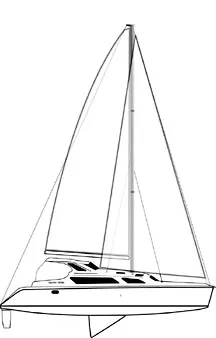
Tony Smith’s most recent design is the third iteration of a 34-foot catamaran that his company, Performance Cruising, Inc., of Annapolis, first introduced to the American market in the 1990s. The result of Smith’s continued tinkering, the 105Mc, is, he says faster than the original. Since this is our first review of the Gemini cat in any version, we can’t compare. But we can report that this boat is fast for a cruising catamaran. It’s also evidence that when a builder is willing to incorporate new and sometimes expensive ideas in design development, the results can be worth the investment.
Company History Tony Smith is a British expatriate who, with wife Susan, formed Performance Cruising in 1980. Following graduation from the University of East Anglia with a degree in engineering, he studied the mechanics of boat performance while participating in singlehanded races, including the first 2,100-mile Round Britain race, in which he finished fourth.
He began his boatbuilding career by constructing a 24-foot Piver trimaran in a shed in England. Then, in 1969, he developed a method of integrating foam coring with fiberglass, and produced the Telstar, a 26-foot, folding trimaran. During a 10-year run, 300 of the boats were sold worldwide. Along the way, he also was involved in the construction of 30- to 70-foot custom yachts.
Eventually emigrating to the US, he introduced the Telstar to the US market. Following the loss of the molds in a fire in 1981, he re-emerged on the scene with the design for a new catamaran, appropriately called the Phoenix, the first Gemini.
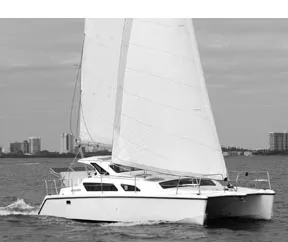
In 1993, the company launched the Gemini 3400, the first catamaran with a lifting underhung rudder system. It was eventually modified and reintroduced as the 105M, and the 105Mc is the most recent upgrade.
With 800 boats on the water, the company claims to be the best-selling catamaran manufacturer in the US. In 2002 the company’s 20 employees built and sold 54 boats, valued at $8 million, in a 16,000-square-foot factory. An additional 25,000 square feet of production space are currently under construction.
Six dealers are located in Florida, Maryland, California and Washington. Though the company also sells directly to customers, there’s no price advantage, and a connection to a local dealer would be an advantage if warranty issues arise.
A prototype for a new Telstar trimaran is undergoing sea trials, and can be seen on the Performance Cruising website.
Appearance/Design Smith’s perspective on sailing and yacht design fits the definition of a multihull advocate. From his standpoint, sailing is about speed, comfort, and stability.
From an aesthetic standpoint, comparisons of a 35-foot catamaran to a cruising monohull are usually akin to comparing a coupe to a delivery van. Though both may be designed to accomplish the same purposes, the execution varies greatly. Many cruising multihulls present a slab-sided appearance, and boxlike profiles with cabins extending high above deck level.
The 105Mc does not. When viewed from the quarter, the Mc has a relatively sporty appearance, even with the addition of a cockpit canopy that raises the boat’s profile. Viewed on the centerline, there’s no question she’s a cat, though the unsightly strakes of the 3400 version have been eliminated.
Smith says Gemini catamarans are designed for “serious ocean cruising,” adding that “a 23-day passage with son Neil across the North Atlantic opened my eyes to her capabilities.”
During the passage, he says, the pair encountered 45-knot winds and 35-foot waves, but never felt they were in harm’s way, and were comfortably ensconced in the cockpit wearing layers of fleece.
As most readers know, voyaging in multihulls offshore demands some different sailing techniques and priorities than sailing ballasted monohulls. The high initial stability of a multihull works both ways: the boat will mightily resist capsizing, but if it does go over and invert, it will be virtually impossible to right again without the assistance of a large ship with a cargo crane. Assuming the essential integrity of the hulls, the platform will be stable, and the crew will live in an inverted world pending rescue. However, very few owners of cruising multihulls have the occasion to take their boats into conditions that seriously challenge their initial stability, and (North Atlantic deliveries by designers notwithstanding) this Mc will usually be sailed in coastal or near-coastal waters.
The Mc has the same basic dimensions as the 3400. Note that the weights published in the company’s sales literature and on its website are at odds with each other. Dimensions in this article are accurate, Smith says: “The 105M and the Mc are the same weight—9,600 pounds. We realized after our trans-Atlantic trip that the weights we had given for the 105M were too low. We finally bought a pair of scales!
“The mast on the Mc is a foot taller than the 105M, and has a 1′ crane.” The mainsail now carries a large roach and full battens, increasing mainsail area from 260 to 340 square feet, a hefty jump. The 150% genoa carries 350 square feet.
A new option is a flat-cut overlapping genoa known in the multihull world as a “screecher.” This 490-square-foot sail produces spinnaker performance without adding a pole and guys.
The furling drum for the screecher tack can move athwartships on a curved track that is mounted at the prows of both hulls and across the bowsprit/anchor platform, forward of where the anchor is dropped through. This movable tack allows more flexibility with sheeting angles, especially when attempting to work to weather.
The cut of the sail allows it to be sailed to within 50 degrees of the apparent wind, and the tack arrangement doesn’t get in the way of the ground tackle.
Smith describes the hull shapes, introduced in 1995 on the 105M model, as “revolutionary in the multihull industry.” They have a 9:1 length to width ratio.
“They closely resemble a racing monohull,” Smith says. “They are shallow and fat, with a teardrop shape to produce more speed and increase load-carrying capacity. Compared to the 3400, narrower shapes allow hulls to be moved outward to produce stability without increasing beam.”
The foredeck has 39″ of clearance at the bow. (Note that the builders refer to the deck area forward of the cabin as the “bridge deck,” but we’ll use “foredeck” as we don’t want to confuse it with the bit of decking often found between the cockpit and the companionway.)
Asymmetric centerboards were designed to reduce turbulent drag and increase lift. Constructed of a combination of fiberglass mat and Kevlar surrounding closed cell foam, they pivot upward to allow shallow-water anchoring. Located in cavities on the hulls, they are raised from inside the main saloon, a convenient arrangement that does not interfere with galley or navigational chores. Smith says the combination of hull and centerboard redesigns produced a boat requiring “25% less energy to push it the same speed.”
The cockpit sole has been lowered slightly to increase headroom to 6′ 7″. However, the modification does not impair the helmsman’s view forward through a large Lexan window that spans the deck. The wheel was moved outboard, allowing the helmsman to steer from the rail. Mainsail controls are now located on a thicker transom that provides more comfortable seating for crew, and the stern has been modified to allow access from swim ladders.
Smith’s personality is that of a consummate tinkerer. However, unlike industry giants, he enjoys the luxury of being able to continually focus his attention on one product with an eye toward evolutionary improvements.
Deck One early impression while sailing this boat is that the cockpit doesn’t resemble a spaghetti factory, though the boat is as well-equipped with name-brand equipment as a similar-sized monohull.
Halyards are led to winches on the mast rather than sheetstoppers on the cabintop because, Smith says, “you’re operating on a stable platform, even in a blow,” so moving forward is not as treacherous.
The mast carries straight double spreaders and is stepped on deck atop the main bulkhead. The headstay is opposed by a split backstay with tensioner. Halyards are internal. Shrouds are dead-ended on chainplates at the main bulkhead. The chainplates are bolted through steel strapping bonded into the foredeck area.
The mast is rigged with permanent checkstays angled 20 degrees aft. These are supported through the deck by a stainless steel rod married to a steel plate mounted horizontally in the hull. The powerful sailplan is well supported.
As is true on most catamarans, movement forward is relatively effortless. The combination of 14″ wide steps, a handhold on the canopy, a stainless steel handrail recessed in the cabintop, and 10″ wide decks, allowed us to move forward safely in blustery conditions we encountered on a test sail.
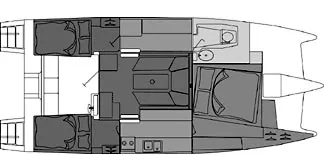
The large sundeck and plastic seats attached to the forward rail provide passengers comfortable lounging spaces forward of the mast when underway. Unlike a lightweight monohull, the cat’s performance is relatively unaffected by weight on the foredeck. Storage compartments are located in each hull.
The helmsman steers seated on a 27″ wide x 16″ deep seat that affords unrestricted views forward. We sailed with three passengers under the canopy without interfering with the skipper. Though the saloon may be enclosed in stinky weather, clear windows on the top half of the cockpit bulkhead slide open to allow the driver to commiserate with passengers.
The mainsheet is attached to the end of the boom and a section of track mounted on the stern rail that affords excellent sail control. However, the task becomes difficult when the cockpit is enclosed by a clear vinyl cover.
Lockers for storage of propane tanks and an optional generator are also located in the cockpit.
Belowdecks Step over an 11″ doorframe into the saloon and there’s no comparing the open spaces of the Mc’s 14-foot beam to the view along the saloon of a typical 34-foot monohull. That impression is augmented by a portlight array that provides 360-degree visibility, and four Bowmar hatches that allow light and air to flow in from overhead.
Fiberglass surfaces are light and shiny, and veneers nicely finished. The fit of most cabinetry is above average.
The centerpiece of the saloon is a C -shaped dining area surrounded by cushions that, with the table removed, serves as a conversation pit. When lowered, the table converts to a double berth.
The space to port, amidships along the hull, is dedicated to the navigator. The master stateroom is forward amidships and to starboard, with the bunk set at a slight angle. The head is forward to port. There’s an elongated galley on the starboard side, matched by a navigator’s station along the port side, and twin staterooms aft.
The boat has enough bunks for 6-8 adults, but Smith rightly calls it “a couple’s boat.” This is a refreshing contrast to builders who overstate the livability of their products.
In addition to its spaciousness, the minimum headroom, even in the head, is more than 6′, so most passengers will be able to stand upright.
Though the interior is not dramatically different than typical production boats, several touches contribute to a favorable impression. The dining table is solid teak. Leaves increase the surface of the table to feed 6-8 adults, and it rotates 90 degrees to fit the crowd.
Part of the navigator’s 89″ long work surface is elevated and shaped so a chart kit fits securely.
Aft staterooms have a 28″ x 28″ area in which to change clothes without banging the hull. Both have double berths and opening ports. Propane sensors and fume detectors are standard equipment in the staterooms, as are audible alarms.
The size of the galley on the Mc was increased by locating countertops on the inboard and outboard sides of the passageway, and the addition of drawers and cabinets. Similarly, room for a built-in microwave was added. The space is filled with a Voyager 2000 two-burner stove with oven and broiler, and two-section stainless steel sink. A solar vent is located overhead. The four-cubic-foot refrigerator is a Dometic American.
Skipper’s quarters are filled with light by a port spanning the hulls that presents views through black Lexan. The queen-sized berth sits on an island with nothing below it but water. Storage is forward in the hull, and in bins to starboard. The aft bulkhead of the compartment is enclosed by smoked glass that slides out of the way to provide a view corridor for the helmsman.
The head compartment on the Mc is big, bright, and well-ventilated. A good touch is a siphon arrangement that allows fresh water to be pumped through the toilet after every use, helping to eliminate odors.
Throughout the catamaran, spaces are well-organized and proportioned, so crews will rest, eat, and sleep in comfort. The skipper’s quarters are large enough to help compensate for the monthly mortgage payment and slip fees.
Construction The Gemini plant is a model of efficiency, with no wasted space, as we learned during an afternoon tour. Boats typically require 5-7 days to proceed past six stations to a forklift waiting to launch them into a creek behind the facility.
Hulls, decks, and interior liners that provide reinforcement of the structure and a base for furniture are solid fiberglass. Liners are glassed and tabbed into the hull prior to installation of the deck.
The lamination schedule calls for vinylester resins bonding a barrier coat of 1.5-oz mat followed by two layers of 18 x 15 Cofab mat. The only coring is 1/2″ end-grain balsa across the foredeck and cabintop, and in cockpit areas in which there are no deck fittings.
The hull-deck joint is a shoebox design bonded with something Smith calls “black poly putty,” produced by Cook’s. Most builders prefer 3M5200 but Smith has used the putty for 20 years because “it has an 8- hour setup time that allows workers to be more precise in the placement of the two sections. It makes a phenomenal bond that is not brittle because it is chemically cured, a better alternative than air-cured products.”
Once installed, the deck is secured with stainless steel fasteners on 5″ centers and the joint is covered by a gunwale guard.
Following his trans-Atlantic trip, Smith decided that the boat needed to undergo a weight loss program. When constructed, most boats are heavier than designed, and the Mc was no exception. Smith estimates the boat was 1,000 pounds too heavy.
“It was not a matter of speed, but of comfort,” he said. “I felt that by reducing the boat’s weight I could increase its buoyancy and produce a more comfortable ride.”
To that end, he replaced drawers in the forward stateroom with bins, substituted 1/2″ plywood for 3/4″ in some areas, and lightened the lamination in some nonload-bearing areas.
The boat’s Achilles heel could be the solving of wiring or plumbing problems, should they occur. Wiring looms are attached to the liner prior to the installation of the liner to the hull, and are virtually inaccessible. Of the arrangement, Smith says “our looms are foolproof. Remember, we’ve been doing this for 20 years and the process is evolutionary, not revolutionary.” Spare hoses are installed during construction to ease retrofitting appliances, and 12-volt wires are run through PVC to avoid heat and chafe. Wires exit the mast into the forward stateroom, and can be accessed in a panel between the deck and liner. Still, we wouldn’t want to perform subcutaneous surgery on this boat.
Performance We sailed the 105Mc on the day after the Annapolis Boat Show ended, when multihull manufacturers congregate to offer rides to interested sailors. A northeaster arrived that morning, bringing winds that built to 25-35 knots and produced a 3-4 foot chop. We were the only multi hull on the water.

With the wind abeam when we slipped dock lines, once we were underway she motored well despite her windage. On the bay, the boat sailed with little heel, and fast, under a reefed mainsail and a flat, 90% jib. Nearby, the three-person crew aboard a 30-foot monohull struggled to keep their boat on her feet.
Sailing closed-hauled, speed fluctuated between 6.5 and 7 knots. The short chop produced a bumpy ride and water over the bow, but we stayed on course with very little leeway. When we cracked off, speed fluctuated between 7 and 12 knots in wind speeds ranging from 17 to 25 knots. She was easy to steer, and responsive when we made sudden maneuvers to avoid crab pots.
The canopy protects crew from the elements, but may provide a false sense of security, as we learned when we moved forward from its protection and stepped into a chilly breeze and seaspray. Handrails are well located, and the nonskid was effective on the wet deck.
The boat is propelled under power by a single Westerbeke diesel, using an outdrive leg than can be lifted clear of the water. The current standard engine is 27-hp, up from the 20-hp engine previously installed.
Conclusions This third generation of Gemini cat is an improvement over her predecessors. She sails as well to windward as can be expected of a cruising catamaran (better than many) and shows good speed and stability off the wind. She’s easy to operate, and well-built. Spaces belowdecks are comfortable and larger than those on similar-sized monohulls, though the lack of a second head will be an inconvenience for skippers overnighting with large crews. With the 27-hp engine, a 150% genoa and furler, and electronics, the tab for the 105Mc is $129,500. Add a screecher for another $5,400.
Contact – Performance Cruising, Inc., 410/626-2720, www.geminicatamarans.com
RELATED ARTICLES MORE FROM AUTHOR
Where is the production site, and can a tour of the facility be arranged?
The boat is no longer in production. Tony retired and sold the company. I think during the 2005 market crash everything fell apart. The outdrive and engine aren’t made anymore. The new owners redesigned the boat and ruined the original idea. They tried to design a boat for the single handed rental market in the Caribbean with a deeper draft and fixed keels. It didn’t sell well.
LEAVE A REPLY Cancel reply
Log in to leave a comment
Latest Videos

Island Packet 370: What You Should Know | Boat Review

How To Make Starlink Better On Your Boat | Interview

Catalina 380: What You Should Know | Boat Review
- Privacy Policy
- Do Not Sell My Personal Information
- Online Account Activation
- Privacy Manager

Gemini Catamaran Models Guide
- Latest Posts
- Best 40 HP Outboard Motor Worth Investing In - October 1, 2022
- Trailer Hub and Bearing Assembly Guide - November 17, 2021
- How to Winterize Your Outboard Motor - October 22, 2021
Arguably one of the United States most popular cruising catamarans, Gemini Catamarans offer a range of domestic-built sailing and motor cruising vessels. Designed for affordability, compact design, ease of use without compromising on comfort and liveability.
The Gemini models deliver an almost unbeatable level of accommodation in relation to their size, with far more private cabin space, specious heads, and elegant dining/living space roomy enough to entertain in.
The Gemini range is a versatile craft to suit a wide customer base from serious liveaboard sailors to coastal weekend cruisers.
History of Gemini Design
The original Gemini hull shape and design was patterned in 1969 by Ken Shaw, with the Gemini 31. Over the years that followed there were serval variations to the original design in the LOA and styling but the Gemini image largely remained the same with both the Gemini 3000 and the Gemini 3200 model.
It was in 1996 when Tony Smith took ownership of the design under his company, Performance Cruising, that he redesigned the hull shape and introduced the much-loved Gemini 105 design.
For over 17 years Tony Smith retained the classic design of the Gemini 105 model, splashing over 1200 hulls from humble beginnings at his facility in Annapolis, Maryland.
At thirty-three feet long and with a beam of just fourteen feet the Gemini 105 was large enough to liveaboard but great value for money whilst also having the flexibility with retractable daggerboards for upwind sailing and gunkholing in the shallows, and due to its compact size, could snuggly fit within a conventional boat slip.
It ticked all the boxes for so many Americans looking for an entry-level catamaran without compromising on comfort.
Flowing a partnership with Hunter Marine and a generous buyout from The Catamaran Company, Gemini was able to live on under the direction of the Smith’s daughter Laura Smith Hershfeld who is now building variations of the classic 105.
We see the Legacy 35 sailing vessel as a fresh take on the proven favourite as well as Gemini’s very own power catamaran range with the Freestyle 339 and customizable Freestyle 37 model.
Gemini Models
Gemini 105mc.

The original and the classic Gemini 105-sailing design was originally conceptualised in 1996 and only later changed to the 105MC in 2004 with some notable differences being the extended cockpit cover to allow a full enclosure and a slightly taller mast.
It was in 2011 that Gemini offered the limited-edition design Touch Models whose upgrades included cherry veneer finishes, Corian countertops and ducted air conditioning.
Since its inception, the 105 model remains one of the most popular sailing catamarans, with a proven and much-loved design. Expect spacious accommodation, in relation to its size, with a light and airy saloon and cockpit, a 3-cabin layout and a large wet head.
The c-shaped settee in the saloon converts into an additional large bed for extra guests and with a propane-powered fridge offering ample food storage, this small vessel provides an excellent platform to entertain and host all your friends.
Built for safety rather than speed the Gemini 105 won’t break any records but still can achieve 40-50% of wind speed and the ability to point at about 50 degrees (apparent) to wind. Utilising the centerboards and sailplane contribute to its ability to sail closer to wind than most production catamarans out there.
And given the centerboards are lifting and the rudders are a kick-up design you can sail through as little as 2’ of water. Fitted with either outboards or Westerbeke 30b3 diesel engines, both options are fitted with great accessibility for servicing and maintenance.
The 105 design is no longer in production and has been replaced with the new Gemini Legacy 35, but there is still a large number of pre-owned Gemini 105 on the used boating market around the world.
Specifications
*Specifications provided from:
https://www.geminicatamarans.com/Gemini-Models/Gemini105Mc-Specifications.html
Designer Tony Smith suggests that this model is the ideal ‘couple’s catamaran’, perfect for those new to the boating world or a coastal cruiser on a monohull budget.
This was the design that has built the Gemini brand name into one of America’s most popular domestic-built catamarans.
For those in the market for pre-owned vessels, this model is well worth considering, especially since it still fosters an active and supportive owner’s association as well as a local builder who is willing to provide support to all Gemini owners.
Gemini Legacy 35

Based on the original Gemini 105 design, the Legacy 35 takes a fresh look at a proven family-friendly performance cruising catamaran.
Still retaining a 34-inch draft, allowing for shallow water anchoring, a 14-foot beam for easy haul out and compact size only 2 feet longer than original the flexibility that this vessel offers is admirable.
It is argued that this 35 model offers more interior than most 40 foot monohulls, still offering the iconic Gemini design down below. The large C-shaped lounge area in the saloon with a table facing aft, a spacious galley amidships on the starboard hull, with cabins and double berths fore and aft.
The port side accommodates the owner’s stateroom with an aft head, a navigation station amidships and a spacious cabin forward for the mast, there really is plenty of room for the whole family below the decks here.
Similar to that of the Gemini 105 the Legacy 35 handles easily, tracking straight with its shallow keels and together with a square-top mainsail and optional Selden sprit you can enjoy speedy sailing atop this stable platform, with virtually no heeling.
This design has also included an upgrade to the engine specs to include two 15 horsepower shaft drive Yanmar diesels, allowing for a much higher and efficient motoring speed.
*Specifications and features provided from:
https://www.geminicatamarans.com/Gemini-Models/GeminiLegacy35-Specifications.html
There is no doubt Gemini’s new Legacy 35 model has been well received by the wider American sailing customer base, receiving raving reviews from its cruising community. Gemini still retains its place in the market based on its core values of comfort, sailing ability and excellent value with this popular new sailing design.
Gemini Freestyle 37

The Gemini Freestyle 37 is a completely new concept for Gemini and also in boat design, fully customizable for a world where flexibility is key.
Each Freestyle model can be tailored to suit a variety of sailing ambitions, whether it be as a basic sailing family catamaran, a day charter boat or even luxury cruising vessel complete with chaise lounge, outdoor galley and wraparound bar.
Still based on the classic Gemini 105 hulls this vessel can be purchased at a very low base price and customised to suit any family. The basic base price offers a similar style to an open picnic-style boat with deck furniture available as modular or built-in sections from the factory, either at initial purchase or as a retrofit.
There is also an option for a full-size hardtop canopy that can be used as a sun deck or platform for solar panels. The added platform for solar allows for a new ‘green’ version of the design, developed to include electric engines and ample solar power for appliances.
Deck / Hull / Cockpit*
- Anchor Roller
- Anchor Well w/ Space for Rode and Chain
- Blister Prevent Technology Hull
- Bow Pulpit, Stainless Steel with Bow Seats
- Hull, FRP / Balsa Sandwich and Naidacore© Above Waterline, Solid FRP Bottom
- Hull, Structural Grid Reinforcement
- Lifelines, Double w/ Stainless Steel Stanchions
- Four Mooring Cleats, Stainless Steel
- Non-Skid Deck
- Rub rail, Full Wrap w/ Stainless Steel Insert
- Rudder w/ Stainless Steel Shaft
- Stainless Steel Telescoping Swim Ladder
- Through-Bolted Hull / Deck Join
- Through-Hull Fittings, All Marelon Below the Waterline
- Cockpit Traveler Arch, Stainless Steel w/ Mainsheet
- Full, Overhead Canvas Canopy
- Two Storage Lockers
Storage Cabinets
- Under-Counter Storage
- Sink, Single Stainless Steel
- Optional Refrigerator
- Optional Corian® Countertop
- Optional Fresh Water System, Pressurized, Hot and Cold
Forward Cabin
- Overhead Cabin Lighting
- 1 Deck Hatch, Opening
- Electrical Outlets, AC/DC
- Hanging Locker
- Queen Size Mattress, Foam
- Storage Shelving
Forward Head
- Sink with pull out shower faucet
- Optional Separate Shower
- Vanity Unit with Mirror
- Optional Corian Countertop
- Shower Curtain
- Teak Shower Grate in Floor
- Shower Sump Pump
- GFI Receptacle
- Optional Water Heater
Forward Cockpit

- Seating for up to Six
- Floor Drain
- Optional Cockpit Cushions
- Optional Cockpit Table
- Internal Halyards led to Helm Station
- Jib Furling System
- Jib, 100% Furling with Sun Cover
- Mainsail, Full Roach
- Mainsheet Purchase System
- Mast with Diamond Rig and Fractional Sail Plan
- Reefing System, Dual Line Led Aft
- Rigging Line Stoppers and Organizers
- One Winch Handles
- Winches, (2) Rigging, 2-speed Self Tailing
Systems / Electronics
- 12-Volt DC Electrical System w/ Breaker Panel
- Electrical Outlets, AC & DC
- Optional Alternator, 60-Amp with Dual Diesel
Inboard Option
- 2 – Group 24 batteries
- 1 X 2 Blade Props
- Battery Box, Port
- Battery Box, Starboard
- Optional Battery Charger, 40-Amp
- Bilge Pump, Electric, Automatic
- Engine Panel, Deluxe w/ Alarms and Hour Meter
- Gauges, Tank for Fuel, Water
- Fresh Water System, Pressurized Cold
- Navigation Light Package
- Shore Power System, 120 Volt
- Emergency Tiller
https://www.geminicatamarans.com/Gemini-Models/GeminiFreestyle37-Specifications.html
The Gemini Freestyle 37 not only offers the trusted design features of the original Gemini hulls but opens up the possibilities to a far wider audience of sailors with its flexibility in custom-built versions.
Gemini Freestyle 399 Power

Taking the streamlined design features that step further, Gemini now has their very first ultimate day-powerboat catamaran. Taking all the innovations of customizability from the Freestyle 37 and evolving this to suit the motorboat market.
Unlike the other models, this design incorporates a centre consul design powdered by twin Suzuki DF90A outboards with a cruising speed of 15 knots and 22.5 knots at full throttle. This helm station is positioned front and centre makes the cockpit an ever-larger entertaining space.
Similar to the Freestyle 37 this model is fully customizable to suit almost any purpose with basic day use versions, charter and full luxury fit-out options available.

Forward Head(s)
https://www.geminicatamarans.com/Gemini-Models/GeminiFreestyle399-Specifications.html
This design takes everything great from the earlier sailing models to put a new spin on the motor cruising catamaran, offering the same affordability, comfort and cruising capability that Gemini is so well known for.
Frequently Asked Questions
Answer : Gemini Catamarans are manufactured at the Hunter Marine plant in Florida.
Answer : The Gemini is designed as a coastal cruiser and therefore are designed for a different purpose. It has been reported that some owners of the sailing models have crossed open ocean passages such as the Atlantic and Pacific oceans.
Answer : The Gemini range is a moderately priced modestly constructed catamaran. Their standout features include excellent value, outstanding accommodations and solid sailing performance. There is an active and supportive owners’ association as well informative support from the local US-based build facility. Highlights include: Narrow beam offering ease when hauling out. These vessels fit into a standard slip, lowering the cost of ownership and reducing haul-out fees. Shallow draft combined with kick-up centerboards and rudders as well as outboards that can raise up. This allows the vessel to be anchored in as little as 2’ of water. Great sense of liveability . Despite its size, Gemini catamarans offer larger living spaces than most other comparable-sized boats on the market, combined with a minimum of 6’ of headroom inside and up to 6’7 of headroom in the cockpit. Better than average speed. With regards to their sailing vessel’s range they won’t necessarily bet speed records but for a vessel of her size achieves a noteworthy 40-50% of wind speed and the ability to point at about 50 degrees (apparent) to the wind. Outstanding engine accessibility . Careful consideration has been made with all models for access in and around the engine wells, for both the diesel and outboard fit-outs making it far easier to complete maintenance and servicing.
For more reading:
- Best Boat Accessories: Top 2022 Recommendations
- Motor Boat Types Explained: How to Find the Right One for You
- Best 6HP Outboard Motors That Will Make You Ready to Go
Leave a Comment Cancel Reply
Your email address will not be published. Required fields are marked *
Save my name, email, and website in this browser for the next time I comment.
Did You Know That We Offer Contract to Closing Services? Click Here to Find Out More.
Need Marine Financing? Apply Here With Our Partner, First Approval Source
- Catamaran Interviews
- Catamaran Reviews
- Buying Advice
- Selling Advice
- Woods Design Advice
- Americat 3014
- Balance 526
- Bali 40 Catspace
- Beneteau Blue II
- Broadblue 346
- Broadblue 38 Prestige
- Broadblue 385
- Broadblue 435
- Broadblue 46
- Catalac 10M
- Catalac 11M
- Catalac 12M
- Catalac 900
- Catana 42 S
- Chris White 48 Voyager
- Chris White 55
- Corsair F28 R
- De Villiers
- Dolphin 460
- Endeavour 30
- Endeavour 35 Victory
- Endeavour 36
- Endeavour 44
- Endeavour 44 TrawlerCat
- Fortuna 36 Island Spirit
- Fortuna 401 Island Spirit
- FP 32 Maldives
- FP 35 Tobago
- FP 37 Antigua
- FP 38 Athena
- FP 39 Fidji
- FP 40 Lavezzi
- FP 40 Lucia
- FP 40 Summerland MY
- FP 41 Lipari
- FP 42 Astrea
- FP 42 Venezia
- FP 43 Belize
- FP 44 Helia
- FP 44 Orana
- FP 46 Bahia
- FP 46 Casamance
- FP 48 Salina
- FP 56 Marquises
- FP 57 Sanya
- FP 60 Eleuthera
- FP Saona 47
- Gemini 3000
- Gemini 3200
- Gemini 3400
- Grainger 420 Mystery Cove
- Hirondelle 7M
- Lagoon 37 TPI
- Lagoon 42 TPI
- Lagoon 43 PC
- Leopard 39 PowerCat
- Leopard 45 Classic
- Leopard 47 PowerCat
- Leopard 51 PowerCat
- Leopard 53 PowerCat
- Maine Cat 30
- Maine Cat 41
- Matrix 450 Vision
- Matrix 760 Silhouette
- Maverick 400
- Maverick 420
- Maverick 440
- Nautitech 40
- Nautitech 442
- Nautitech 46 Open
- Nautitech 47
- Outremer 40
- Outremer 45
- Outremer 50 Standard
- Outremer 55
- Privilege 37
- Privilege 39
- Privilege 42
- Privilege 43
- Privilege 435
- Privilege 45
- Privilege 465
- Privilege 48 Transcat
- Privilege 482
- Privilege Serie 5
- Prout 31 Quest
- Prout 33 Quest
- Prout 34 Event
- Prout 35 Snowgoose
- Prout 37 Snowgoose
- Prout 37 Snowgoose Elite
- Prout 38 Manta
- Prout 39 Escale
- Royal Cape 45
- Royal Cape 530 Majestic
- Royal Cape Majestic 500
- Sailcraft 30 Iroquois
- Sailcraft 32 Comanche
- Sailcraft 35 Cherokee
- Sailcraft 41 Apache
- Sailcraft 44 Apache
- Wildcat 350
- Seawind 1000
- Seawind 1160
- Seawind 1200
- Seawind 1260
- Seawind 1600
- Solaris 36 Sunrise
- Solaris 36 Sunstar
- St Francis 44
- St Francis 48
- St Francis 50
- Stealth 11.8
- Heavenly Twins 26
- Ocean Twins 38
- Voyage 380 Maxim
- Voyage 400 Norseman
- Voyage 430 Norseman
- Voyage 450 Cabriolet
- Voyage 47 Mayotte
- Wharram 38 Tiki
- AMI 320 Renaissance
- Woods 22 Wizard
- Woods 35 Banshee
- Woods 35 Flica
- Woods 36 Scylla
- Woods 36 Vardo
- Woods 38 Transit
- Woods 40 Meander
- Xquisite X5
- Xquisite X5+
Gemini 3000 Review: A Budget Boat with an Offshore attitude
- Post author By Capt Chris German
- Post date August 18, 2020

Gemini Catamarans have gotten a reputation among sailors as a cheaper cruiser with a gift for sailing to wind. But it has been my experience that no catamaran goes to wind well and to compare cats on their windward performance is like picking a gold medal winner in the 50 yard dash from a field of sloths. Gemini is no different than any other cat I have sailed, but what they lack in performance and style, they make up for in affordability and modability.
My first mate, Matt entered into the world of Catamarans when he found a used Gemini 30 in an estate sale in Connecticut. I joined him for the 12 hour drive from North Carolina to offer my expert opinion and eye for deals and when we came upon this one what a deal it was. The gentleman who owned it had passed and there was a storage unit full of extras and a yard bill that the family didn’t want to pay. In late October and November yard bills come due for winter storage and great many deals can be had when the yard starts putting thumb screws on the owners to pay up.

Matt scored this boat for a budget price of $8500 and that left plenty over to refinish the boat when he got it trucked back to North Carolina. Digging in, he found a great many sins in the boat where quality corners were cut and cost cutting combined with weight control, left a decided flimsy boat that as Matt says, “ is perfect to sail from Maryland to the Carribean and that’s about it.”

Built in 1985, Matt’s boat was laid in Mayo, Maryland at the Gemini plant. Designed by British Boat Builder Tony Smith, it was the second generation of the vessel with four designs total made from the same mold, the 3100, 3000, 3200 and 3400- but with different designs. This one proved to be no match for ages as the years were hard on this girl. Matt found lots of rot and mold that needed to be cut away where water intrusion compromised the soft goods like head liner and wall coverings. Bulkheads and deck joints were peeling away where glass was improperly laid up and wood coring rotted away. The wood cored top side had a few soft spots that gave the boat a flimsy feel and he found a ton of opportunity to stiffen up seams and joints with some judicious use of mat fiberglass. Once the loose joints were resecured he went to town with paint and gave the boat a whole new fresh feel and clean smell, even if it had lost all the charm that the builders intended.
The 3000 has a decidedly light feel to the boat and gives a sailor pause before taking it out in any heavy breeze, but Matt enjoyed overnighting on the vessel while cruising the inshore waters of the Neuse River down to Beaufort. The boat was heavy enough to handle some of the more intense Ocean breezes, but light enough and shallow enough to gunk hole in the swamps and hiding holes of East Carolina.
For storage and liveability this boat came in dead even because it’s original design lacked a certain quality with the rotten headliner and failing bulkhead joints and time had taken its toll. After gutting the thing, he made it his own complete with wine-filled Marty Moose Mugs and Jimmy Buffett tunes blaring at 2 am on the dock. What it lacks in polish, it makes up with Matt’s unique style and by focusing on the functionality of the boat he made a seaworthy vessel that serves him well. He found convenience in the 9.9 honda outboard at first that pushed the boat just fine while saving on gas. He tells me, were he to do it all over again he might scrap the fiberglass cockpit cover but I personally like the cover as it gave great protection to the helm and created a warm place to ring in the New Year last winter when I last visited.
There were no major frills on this boat and the sail plan was entirely average with a genoa jib and standard main. It made great time downind on a reach but labored to go windward higher than 60 degrees like most cats. It’s deck design and talent for downwind sailing, made for a very comfy sail with minimal hobby horsing And the low profile cabin top made traversing the hard shell trampoline that spans the hulls to douse the main quite easy. While she won’t win any races, she’s a good cruiser downwind and comfy enough for even a young family who is looking to head out together on a budget.
Gemini built a ton of these ladies in the 80’s when the dollar was strong and the boats were flimsy. But 30 years later the headliner was shot and the decor distinctly dated. Matt enjoyed tearing it all out down to bare fiberglass and eventually chose to scrap the standard Honda for an equally old but more reliable four stroke Envinrude. And he was just out this past month in 30 knots of breeze where he says waves were crashing over the bow and the boat was flexing like an accordion. He said it was so bad even the dog got scared, but he made it back in time for work and credits Gemini for building a boat that won’t take you to Fiji, but is enough to help you keep your sanity while you socially isolate.

All told, the Gemini 3000 is plentiful on the used US market with 500 hulls made in Maryland from 1980 to 1996. A new boat will run you considerably more than a used model which can be found for as low $3500 for the truly ambitious DIYers. But if you’re into the new ones, you will be forced to spend a ton more money and buy five more feet because they discontinued the 30 late last century. The Gemini 30 however is “great weekender plus” says Matt and for the money, you won’t find a better entry level catamaran for the newly inaugurated sailor looking for a used vessel. Thanks for reading and do well, have fun and sail far.
- Tags Catamaran Interviews , Catamaran Reviews

By Capt Chris German
Capt Chris German has taught sailing for more than 25 years with NauticED and US Sailing. He has delivered boats from Maine to Florida and taught thousands of students from beginner to 100 ton Captains to coaching Olympic Hopefuls.

Can You Sail a Catamaran Around The World?

Last Updated by
Daniel Wade
August 30, 2022
Many people have sailed around the world in traditional monohull sailboats, but has anybody tried with a catamaran?
Sailing around the world is hazardous and trying at times, so it pays to have a sailboat that's built for the job. Sailors place a premium on safety and comfort—so where do catamarans fit into the equation?
Yes, you can sail a catamaran around the world. In fact, full-size catamarans are some of the best circumnavigation sailboats on the market. They offer superior comfort, safety, storage space, and speed when compared to monohulls.
Catamarans have become increasingly popular since the 1990s, and they're seen in ports all over the world. If you consider their handling characteristics, it's no wonder they're so popular for circumnavigation. But what are the things that make cruising catamarans so good for long ocean voyages?
We sourced the information used in this article from sailboat design guides and the online sailing community. We also considered the input of several experienced catamaran captains, most of which have embarked on circumnavigations in catamarans and monohulls.
Table of contents
Can You Circumnavigate in a Catamaran?
You can absolutely sail a catamaran around the world! In fact, catamarans are preferred by many sailors for long ocean voyages, and dozens circumnavigate in all seasons each year. The number of catamarans continues to rise every year, and some of the world’s most influential long-distance sailors have switched to them from monohulls.
There are many benefits to choosing a catamaran for a circumnavigation, and we’ll cover some of those soon. But first, here’s what makes a catamaran suitable for an around the world sailing trip.
What Kind of Catamaran Can Sail Around the World?
Not all catamarans are ideal for long ocean voyages, but the vast majority above 25 feet in length are. The kind of vessel that's suitable for a long ocean voyage is called a cruising catamaran.
Cruising catamarans have a number of defining characteristics that make them ideal for Sailing around the world. Here are a few of them.
Cruising catamarans have extensive cabinet space. Smaller catamarans that aren't designed for large ocean voyages aren't designed for comfort. Cruising catamarans have between two and four staterooms, along with a large covered cockpit and standing headroom throughout.
High Freeboard
Cruising catamarans have a high freeboard, which means the decks are relatively high above the water. They also have a shallow draft, as a catamaran has no need for a centerboard, fin keel, or bulb keel.
Catamarans are not as long as monohulls relative to their capabilities. A 35 or 40-foot catamaran has much more interior space than an equivalently-sized monohull. Catamarans split their living quarters between the two hulls and include an additional spacious covered cockpit above.
Cruising catamarans range in size from 30 feet to 60 feet in length, and they typically measure around 40 to 50 feet from stem to stern. The bottom limit for livable Catamarans seems to be about 25 to 30 feet. Catamarans that are smaller than this lack the space for comfortable living accommodations.
Benefits of Catamaran Circumnavigation
Catamarans are quick and robust, and they make excellent long-term cruising sailboats. They're spacious, safe, comfortable, and have exceptional handling characteristics in almost all weather conditions. Here are some of the main advantages of choosing a catamaran to sail around the world.
Speed is one of the most significant benefits of sailing a catamaran around the world. The ocean is a huge place—and unless you're sailing just to sail, it's always advantageous to shorten the time between destinations.
Catamarans are fast—really fast. A typical cruising catamaran can reach speeds in excess of 20 knots in the best conditions, which is more than twice as fast as a typical monohull. This is because catamaran hulls cancel out the hydrodynamic interference that limits the 'hull speed' of monohulls.
Speed also has other important benefits. For one, it reduces the amount (and cost) of provisions that you need to store aboard. Additionally, speed gives you more flexibility when planning and avoiding weather.
Comfort in Rough Weather
Speaking of weather, catamarans have another notable advantage: stability. Catamarans are inherently stable vessels, and they ride much more softly in the rough weather than traditional sailboats.
Catamarans distribute their weight between two hulls. These hulls are connected on the tops, and water is free to flow in between them. Catamaran hulls are also sharp and narrow, and their shape allows wave punching.
This allows them to cut through waves instead of riding over them, and the effects of lateral rolling are also greatly diminished. That means it won't roll as violently from side to side.
All that extra stability contributes to the overall safety of the catamaran design. Since they incorporate two hulls, catamarans are extremely difficult to capsize.
There's another hidden safety benefit of the catamaran design. If in the very unlikely event that you capsize, a catamaran will float just as well upside down provided the hulls split apart. This makes it an effective life raft in a catastrophic situation.
Extra Storage Space
Catamarans have tons of extra storage space, especially if you're traveling with a smaller crew. A typical cruising catamaran has accommodations for around eight people or more and usually includes at least four bunk areas in the hulls.
With all that extra room, there's plenty of space to store food, toiletries, emergency supplies, souvenirs, and personal items. There's also plenty of room for guests.
Room for More Passengers
Catamarans have many more sleeping spaces than an equally sized conventional sailboat. Catamarans usually include two master staterooms in the forward part of each hull and two aft.
The hulls typically contain at least one head in each, and usually two. Some catamarans include four large bathroom/shower combinations, which give each passenger or couple a private bathing area.
Larger 'Day Living' Spaces
Catamarans also have larger living areas between the hulls. The cockpit of a cruising catamaran is usually covered and spans almost the entire beam of the vessel.
This space often contains the galley and a large sitting area, along with a chart table and other essential equipment. The hulls can be accessed on either side of this space, and there's usually a large window forward.
There's standing headroom throughout the covered cockpit. It more than makes up for the lost space in the comparatively narrow hulls, as these areas are used primarily for sleeping.
Shallow Draft
Catamarans don't need an extended keel for stability. As a result, they draw very little water and can traverse shallow waters that similarly sized monohulls couldn't dream of accessing.
It's easy to beach a catamaran which makes it an excellent island-hopping boat as well. Plus, when the tide runs out, a catamaran will rest evenly on the seabed without any additional supports.
Cons of Sailing Around The World in a Catamaran
So what are the cons of sailing a catamaran around the world? We covered many of the benefits, and we'll touch on a few additional topics here. But there are some downsides that are important to consider.
Size Limitations
Size is your friend out on the open ocean. The wide beam and considerable length of most cruising catamarans make them exceptionally safe and comfortable in a variety of weather conditions. However, most marinas aren't designed for Doublewide boats, and size restrictions could cause headaches in many parts of the world.
The problem of having a wide boat extends beyond the marina. Many channels in passageways can't accommodate wide boats, and those that to me charge more for your passage.
Structural Deficiencies
The vast majority of cruising catamarans are extremely well-built and will never suffer any serious structural failures. However, the basic design of a catamaran makes it vulnerable in certain places, specifically where the hull meets the frames that hold them together.
There have been several cases of catamarans literally snapping in half, usually when under tremendous load or when improperly maintained. This can usually be attributed to a flaw in a specific vessel, and it's not very common. But it is a possibility, and monohulls are not susceptible to it.
Cost to Sail a Catamaran Around the World
Are you waiting for the downsides of sailing a catamaran? Cost is the biggest one. Catamarans are obscenely expensive compared to conventional single-hull sailboats.
The average new catamaran cost upwards of $300,000, and some cost as much as $750,000. An equivalent monohull, new from the factory, costs around $150,000-$200,000. Cruising catamarans don't lose much value either, and you're still likely to pay over $100,000 for one.
Compare that to a monohull. A conventional sailboat that's capable of sailing around the world (say, 40 feet or so in length) is likely to cost between $30,000 and $60,000. Some are even cheaper. For many people, the cost is the prohibiting factor when choosing a sailboat to circumnavigate with.
How Popular are Catamarans for Circumnavigation?
If you've spent much time in the sailing community, you've undoubtedly noticed the prolific number of catamarans on YouTube, internet forums, and sailing blogs. But are catamarans really as popular as they seem, or is it just a case of selection bias?
Catamarans are surprisingly popular these days, but mostly among buyers of new and lead model sailboats. Catamarans, as we know them today, weren't produced in great numbers until recently, and they've only been popular for sailing around the world since the 2000s.
Over the years, an increasing number of people have chosen a catamaran as their long-range cruising sailboat, and the sailing community widely accepted the superior handling and comfort of these vessels.
Catamaran Vs Monohull for Circumnavigation
So, which is better for sailing around the world, a catamaran or a monohull? When it comes to sailing around the world, a Catamaran is an obvious choice for a number of reasons. Speed, safety, and comfort or the primary benefits, and these are worth their weight in gold on a long circumnavigation.
Catamaran Vs Trimaran for Circumnavigation
But what about the trimaran? Many multihull sailors prefer the trimaran due to its superior speed, and many claim it has better motion comfort as well. A trimaran, which has three hulls, is a sizable upgrade from a monohull.
Comparatively, a trimaran is a much less considerable improvement over a catamaran. They also cost more, but the exceptional handling and motion comfort of a trimaran is worth it to many.
Related Articles
How to Sail Around the World
What Size Catamaran To Sail Around The World
I've personally had thousands of questions about sailing and sailboats over the years. As I learn and experience sailing, and the community, I share the answers that work and make sense to me, here on Life of Sailing.
by this author

Most Recent

What Does "Sailing By The Lee" Mean?
October 3, 2023

The Best Sailing Schools And Programs: Reviews & Ratings
September 26, 2023
Important Legal Info
Lifeofsailing.com is a participant in the Amazon Services LLC Associates Program, an affiliate advertising program designed to provide a means for sites to earn advertising fees by advertising and linking to Amazon. This site also participates in other affiliate programs and is compensated for referring traffic and business to these companies.
Similar Posts

How To Choose The Right Sailing Instructor
August 16, 2023

Cost To Sail Around The World
May 16, 2023

Why Do Catamarans Have Trampolines?
April 17, 2023
Popular Posts

Best Liveaboard Catamaran Sailboats
December 28, 2023

Can a Novice Sail Around the World?
Elizabeth O'Malley
June 15, 2022

4 Best Electric Outboard Motors

How Long Did It Take The Vikings To Sail To England?

10 Best Sailboat Brands (And Why)
December 20, 2023

7 Best Places To Liveaboard A Sailboat
Get the best sailing content.
Top Rated Posts
Lifeofsailing.com is a participant in the Amazon Services LLC Associates Program, an affiliate advertising program designed to provide a means for sites to earn advertising fees by advertising and linking to Amazon. This site also participates in other affiliate programs and is compensated for referring traffic and business to these companies. (866) 342-SAIL
© 2024 Life of Sailing Email: [email protected] Address: 11816 Inwood Rd #3024 Dallas, TX 75244 Disclaimer Privacy Policy
- BOAT OF THE YEAR
- Newsletters
- Sailboat Reviews
- Boating Safety
- Sailing Totem
- Charter Resources
- Destinations
- Galley Recipes
- Living Aboard
- Sails and Rigging
- Maintenance
- Best Marine Electronics & Technology

Best Cruising Catamarans
- By Cruising World Editors
- Updated: July 1, 2021
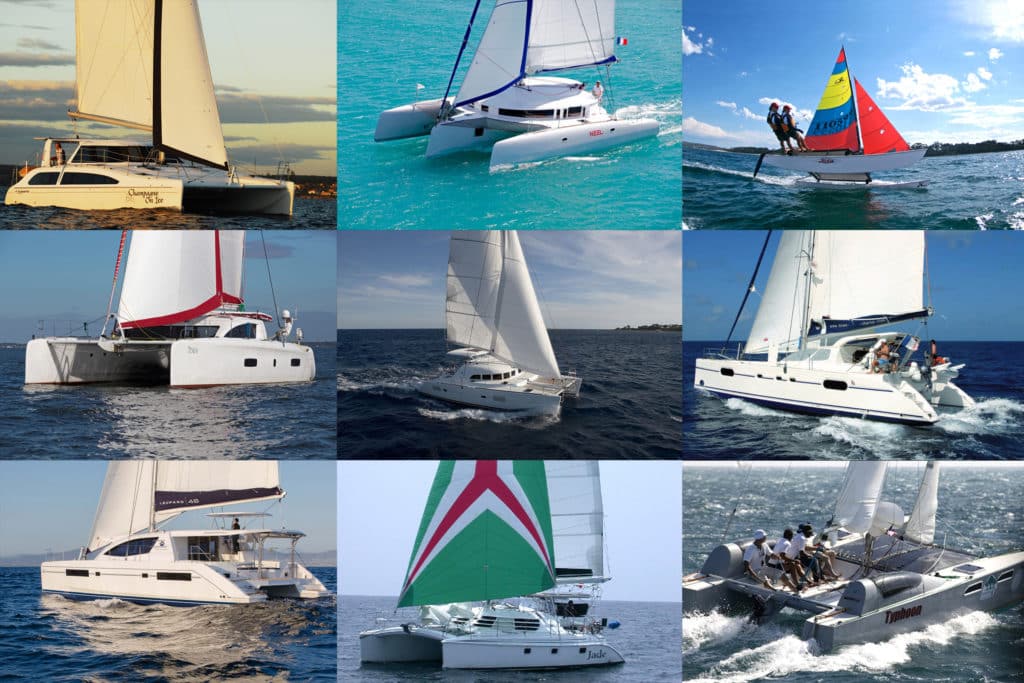
Cruising catamarans have been around for decades, but early models—often plywood and fiberglass vessels built by their owners from plans and kits, kept the boats on the fringes of mainstream sailing. That all changed, though, as big roomy cats were discovered by sailors who went off to charter in the Caribbean, where the multihulls proved their worth as comfortable liveaboard and party boats.
Today’s bluewater catamarans roam the globe, carrying families to exotic destinations across the Pacific and beyond. Just as with their monohull cousins, there is no best catamaran. Instead there is a wide variety of designs, ranging from small catamarans that offer the ease of maintenance a couple might enjoy to performance catamarans capable of easily knocking off 250-mile days. Today, the best catamaran brands offer a range of size models and layouts that can be optimized for an owner sailing with family and friends, or for the charter market, where there’s a demand for four, five and even six cabins worth of accommodations.
The most prolific catamaran manufacturers are in France and South Africa where yards include both large-run production builders and niche companies building fewer than 10 boats a year.
The best cruising catamarans offer good load-carrying ability and respectable performance. As with any sailboat , a modern catamaran’s design is a result of compromises. Daggerboards or keels? Galley up or galley down? Spacious owner’s cabin or extra bunks? There are lots of options to choose from—and that’s what makes looking at these sailboats fun!
Here, then is an eclectic A to Z list of some of the best catamarans that have helped shaped the evolution of how we live and sail on two hulls.
Antares 44i
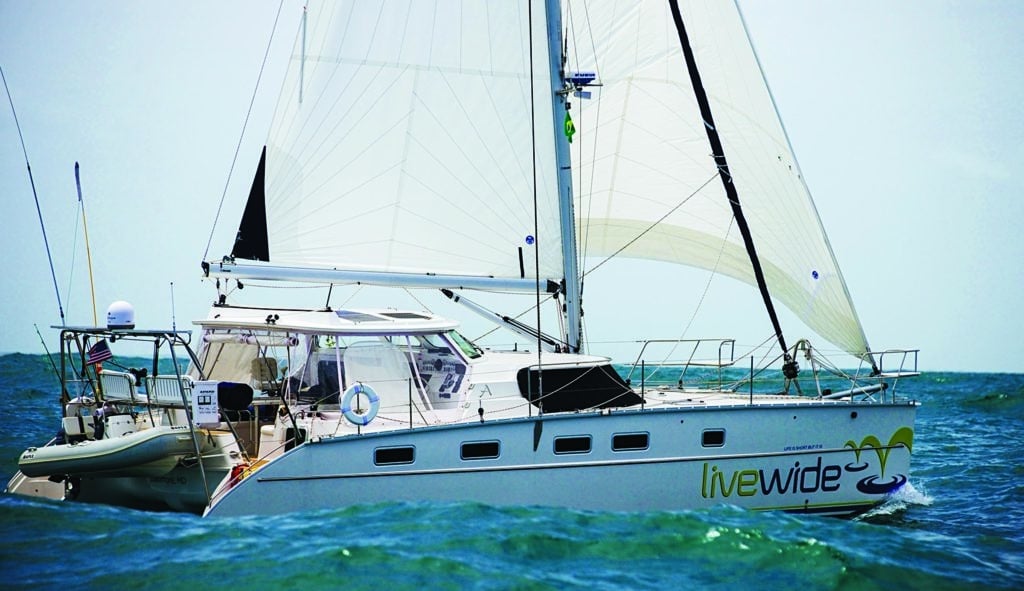
Now built in Argentina as a full-fledged, bluewater catamaran and cruiser that can be safely operated by a shorthanded couple or family crew, the Antares 44i features a fully covered cockpit with a quartet of big, standard solar panels recessed within the hardtop, one example of a yacht capable of long-range passagemaking.
Atlantic 42
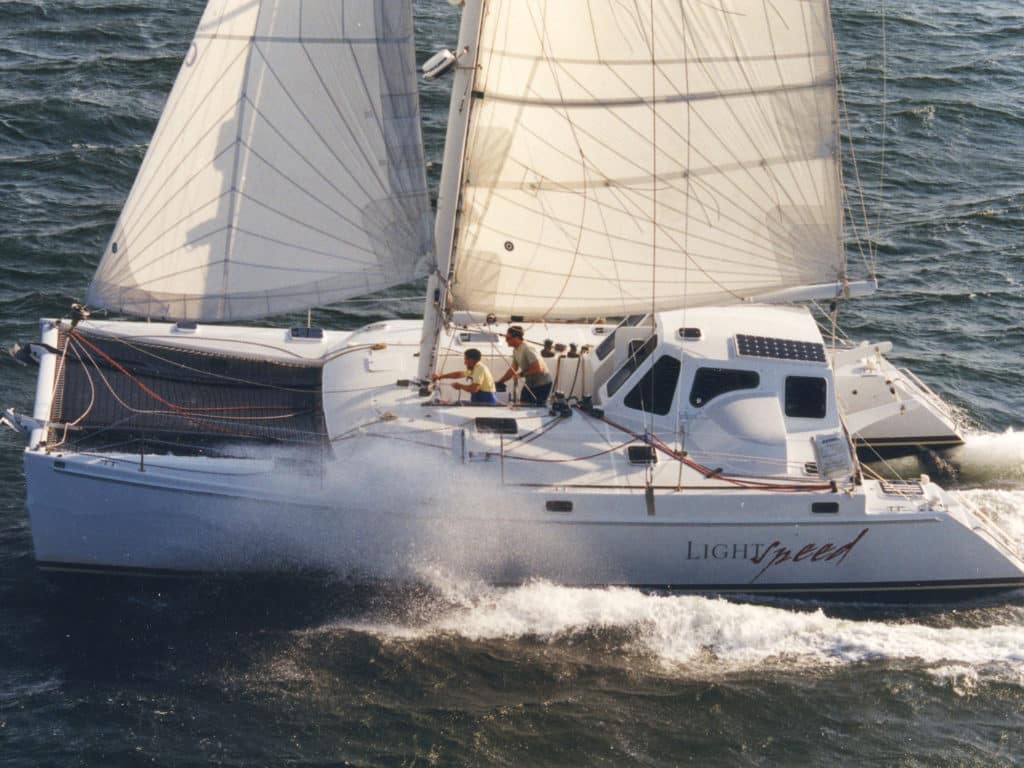
Almost 30 years ago, yacht designer Chris White revolutionized catamaran design with the first in his series of Atlantic cats, the primary feature of which was the innovative mid-ship sailing cockpit forward of the main cabin. The smallest in the Atlantic line, the 42 remains White’s most popular design ever.
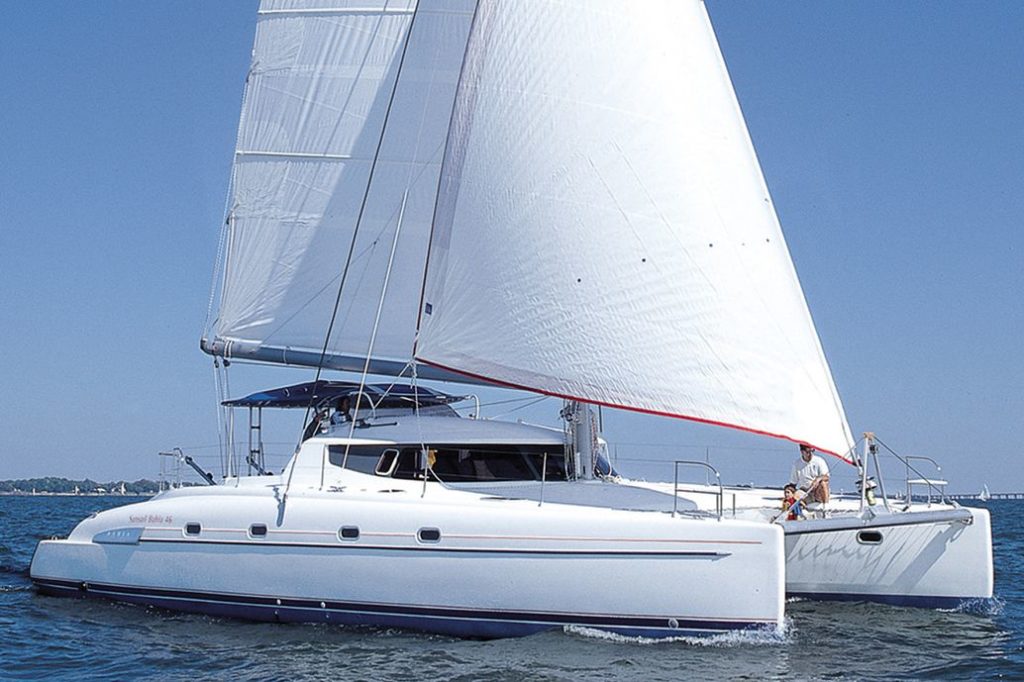
Fountaine-Pajot has built so many outstanding cruising catamarans that it’s difficult to narrow down any single boat, but we’ve always been fans of the good-looking, well-thought-out Bahia 46. At 46 feet, the boat is large enough for offshore forays and has plenty of volume; with its simple but powerful sail plan, it’s also an excellent performer.
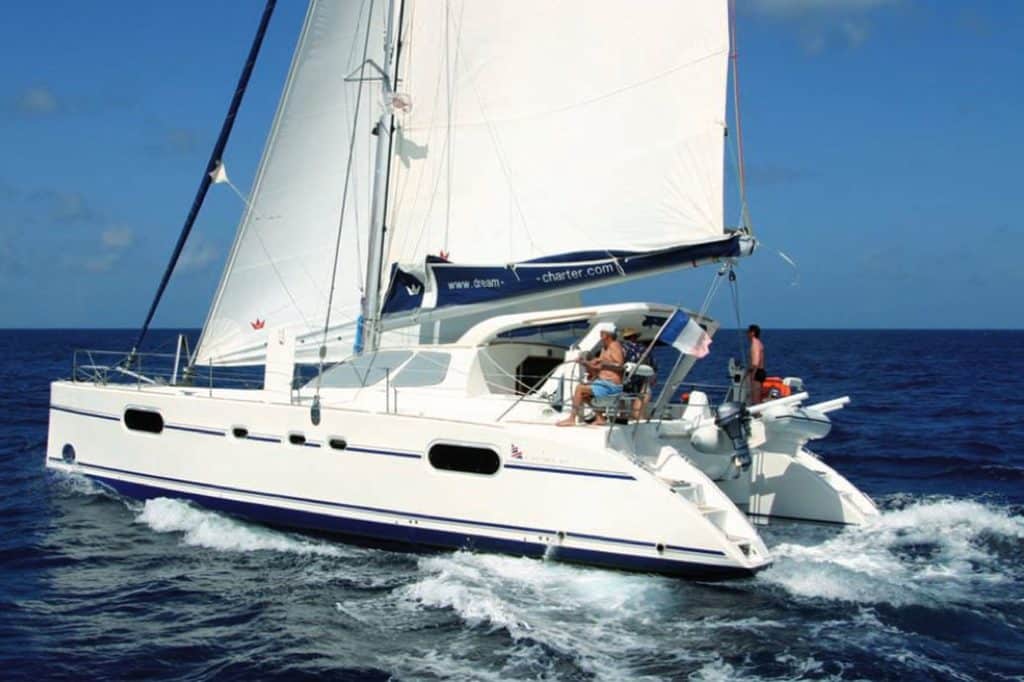
Beginning around 1996, the French builder Catana was one of the first companies to manufacture fully found cruising cats for private ownership, and this Christophe Barreau design, which enjoyed a nearly 10-year production run from 1997-2006, was emblematic of this first generation of safe, fun, long-legged offshore voyagers.
Click here to see more cats from Catana.
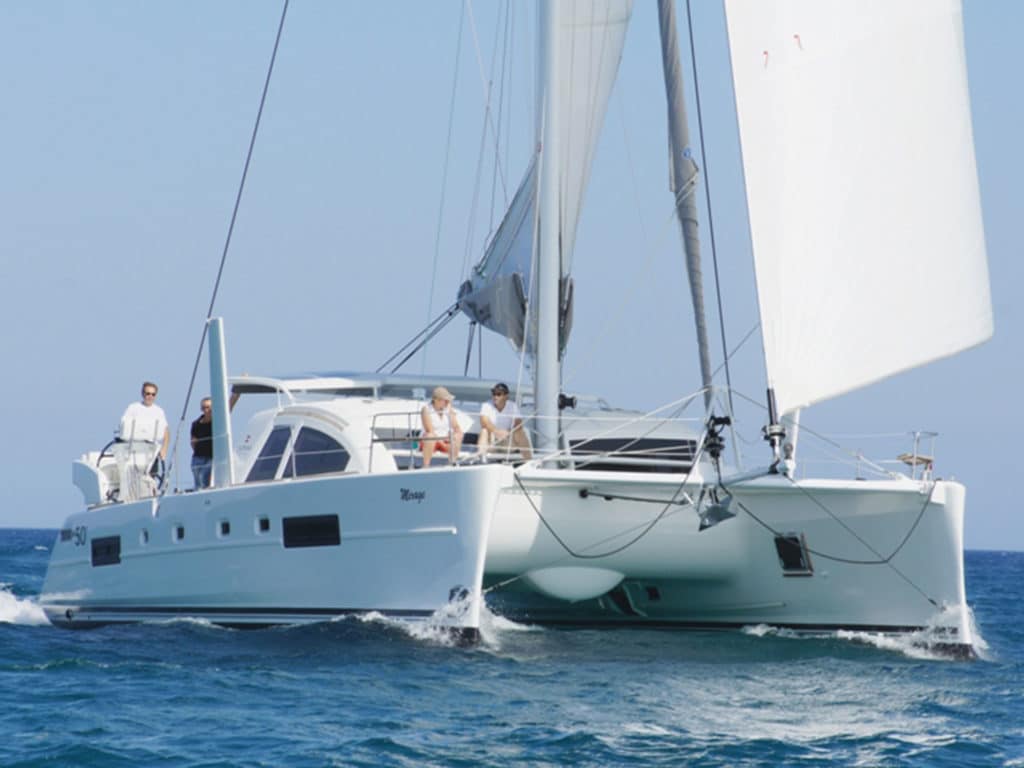
When it comes to speed, light boats are fast ones. And if you wish to save weight, that means exotic modern materials like carbon. Catana now infuses the laminates of their entire production line with carbon fiber, and for this list, we’ve chosen the Catana 50 Carbon, one of the zippiest cats now crossing oceans.
Click here to read about a couple’s charter aboard a Catana 50.
Gemini 105M
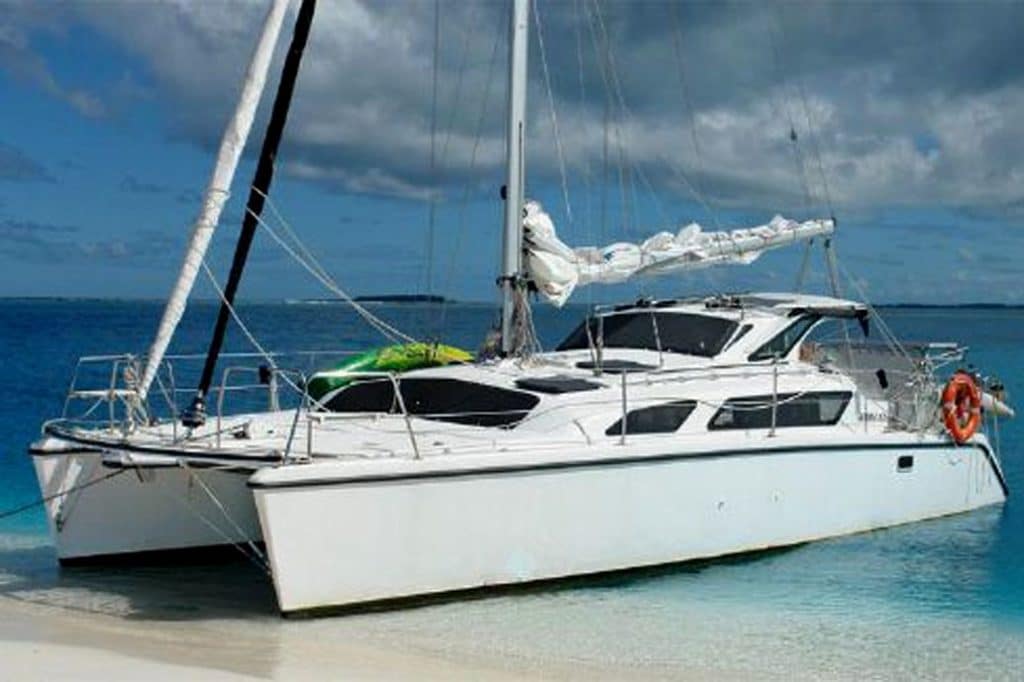
Pioneering catamaran sailor, builder and designer Tony Smith launched the first of his 33-foot Gemini 105M’s (10.5 meters = 33′) in 1993, and soon after found a ready and willing stream of sailors enamored of the boat’s compact size, affordable price tag, and such innovations as the nifty lifting rudder and transom steps.
Click here to read about the Gemini Legacy 35.
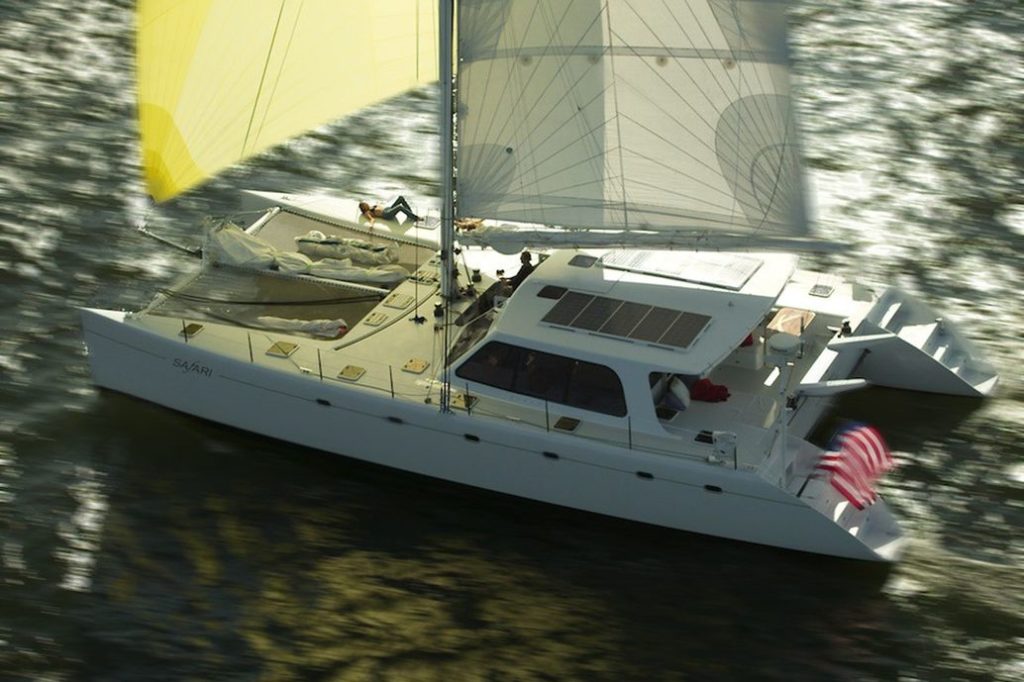
Built between 2000-2005, the Gunboat 62 firmly established the Gunboat brand: go-anywhere cats that applied race-boat technology to a world-cruising platform. Hull no. 1, Tribe, was built for company founder Peter Johnstone, who then spent a year-and-a-half cruising with his family, smiling all the way.
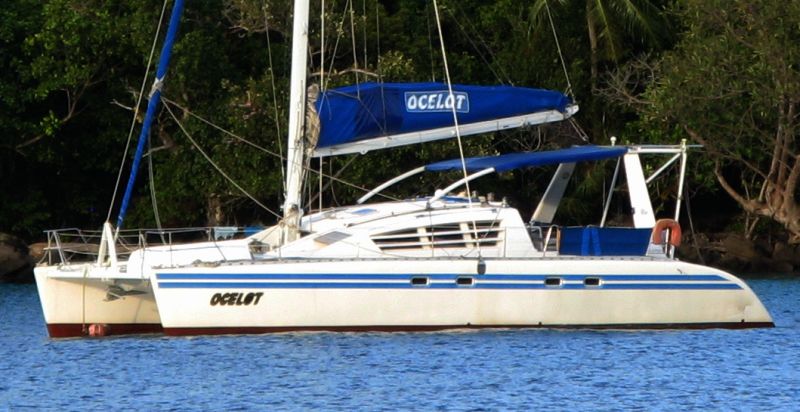
French builder Henri Wauquiez is best known for his long career building monohulls, but the Kronos 45 cat, which he launched in 1992, was ahead of her time. Classic lines, the aft “targa bar” over the cockpit, the louvered coach roof windows, even the distinctive stripes on her hull: the Kronos 45 remains timeless.
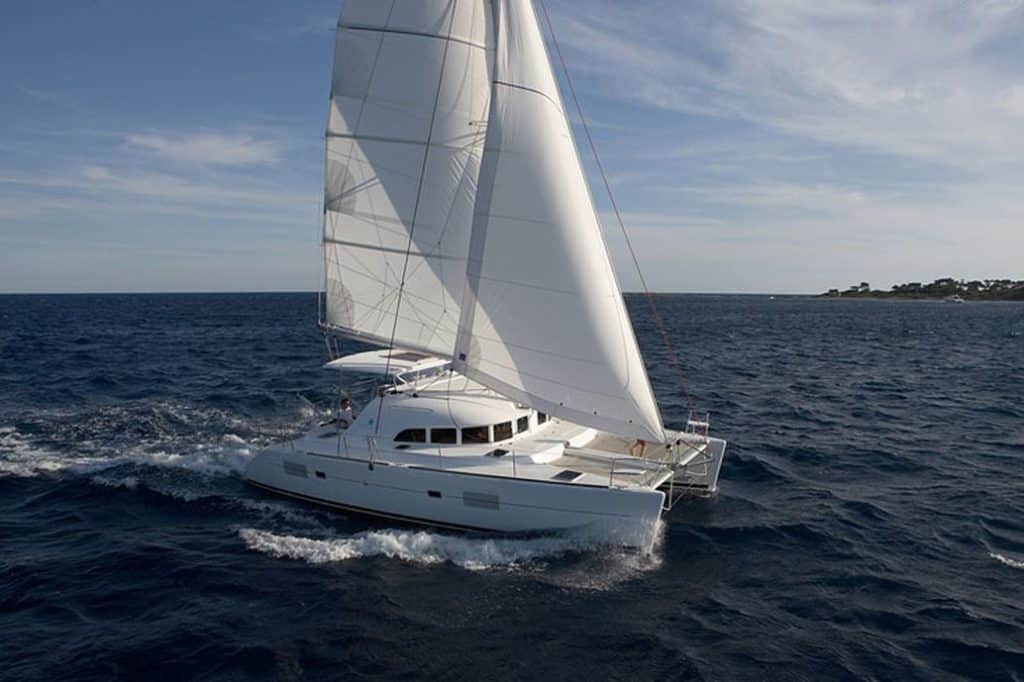
No roundup of cruising cats would be complete without several Lagoon entries, and the best of that impressive bunch might well be the Lagoon 380. Originally launched in 1999, and revered for its combination of quality, volume and performance, with over 740 boats built the 380 is still going strong.
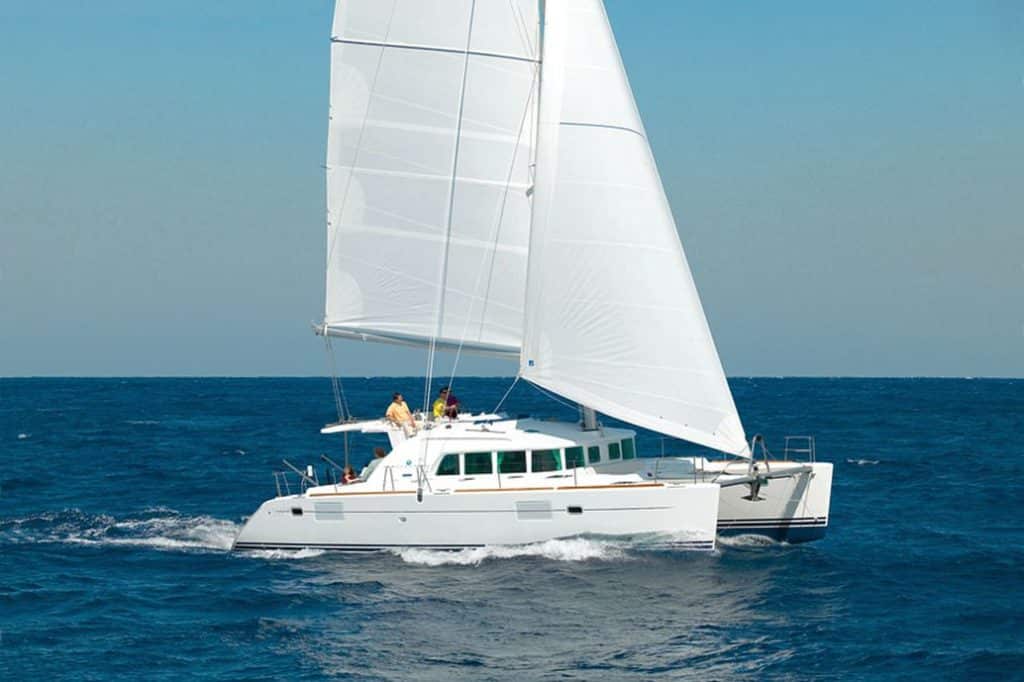
Launched five years after the breakthrough 380, the Lagoon 440 was an evolutionary design that featured a raised flybridge helm station, a unique “gullwing” configuration below the bridge deck, expanded windows in the hull and much more. With 400 boats built in a 6-year production run, the 440 was an unqualified success.
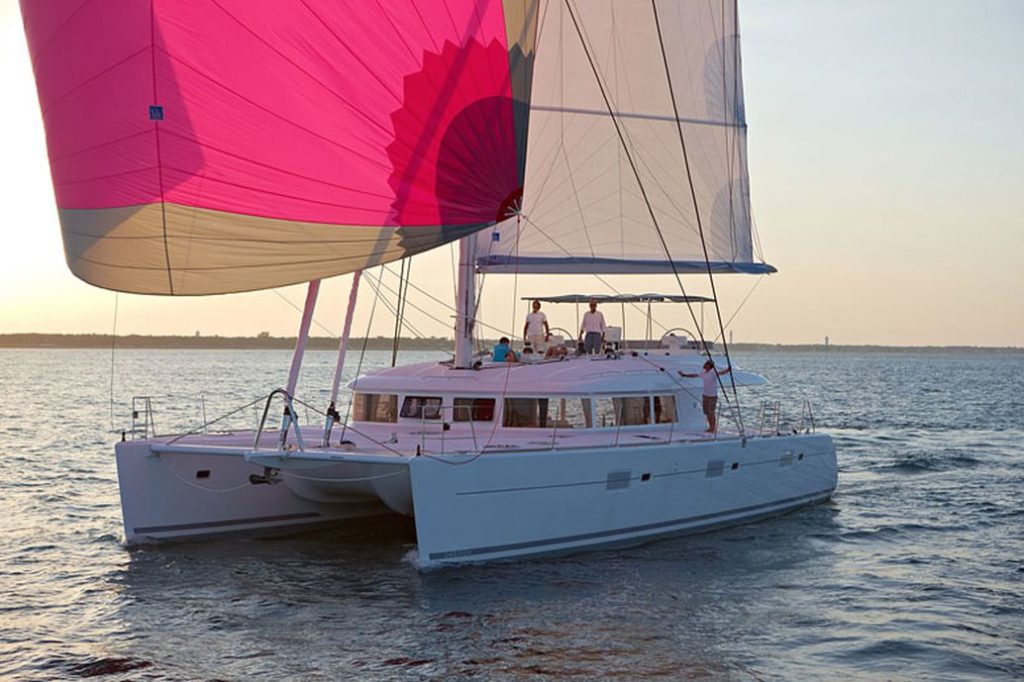
How big can a production cat, still operable by a short-handed crew, really be? The builders at Lagoon discovered that 62-feet hit a sweet spot in the marketplace, and have sold over 70 boats since its introduction in 2010. The centerpiece of this design is the sensational steering station atop the flybridge, with expansive views of the sea and sky.
Click here to see more cats from Lagoon.
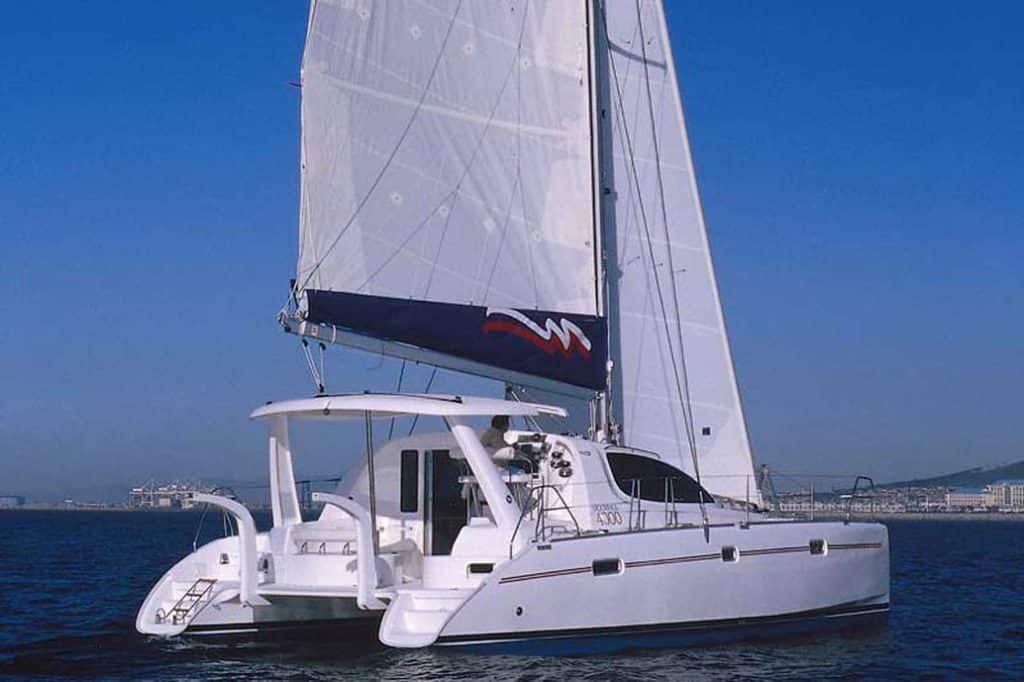
With an unmatched pedigree – designed by premier multihull naval architects Gino Morelli and Pete Melvin, built by the prestigious Robertson & Caine boatyard in South Africa, and commissioned by chartering giant The Moorings – the Leopard 40 was, perhaps unsurprisingly, Cruising World ’s Import Boat of the Year in 2005.
Louisiane 37
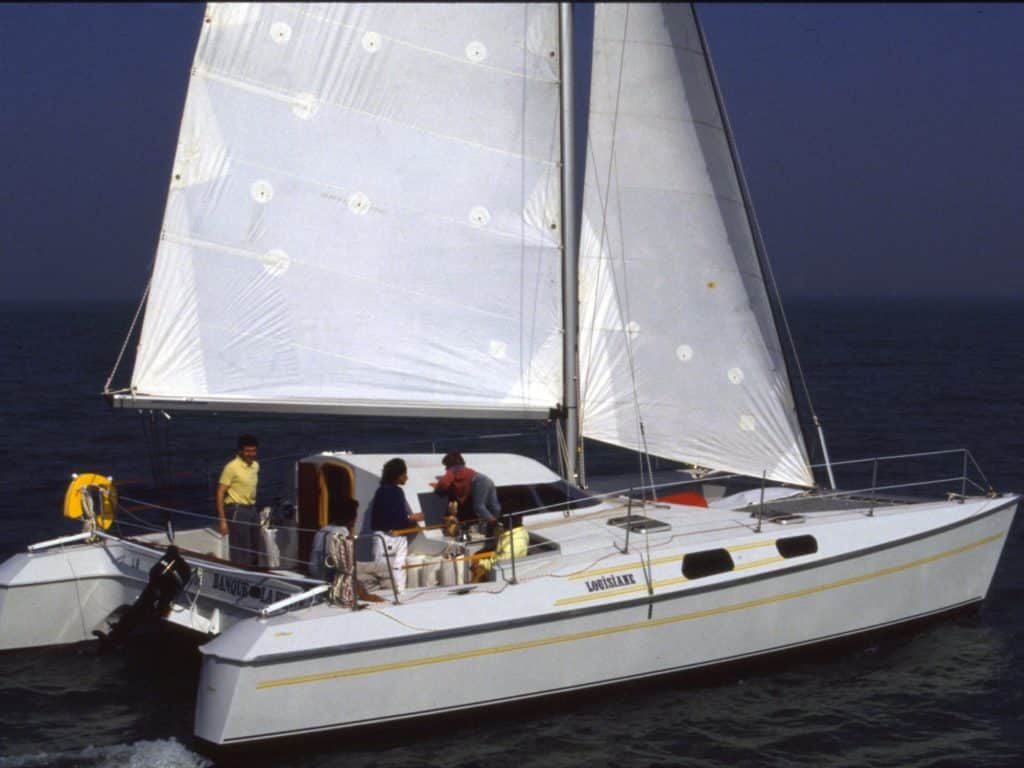
Based on the famous French racing cat Charente-Maritime, the Louisiane 37, designed by Joubert/Nivelt and launched by builder Fountaine-Pajot in 1983, was a light, fast liveaboard cruiser with full accommodations that represented a radical departure from the hefty British cats that preceded it.
Maine Cat 30
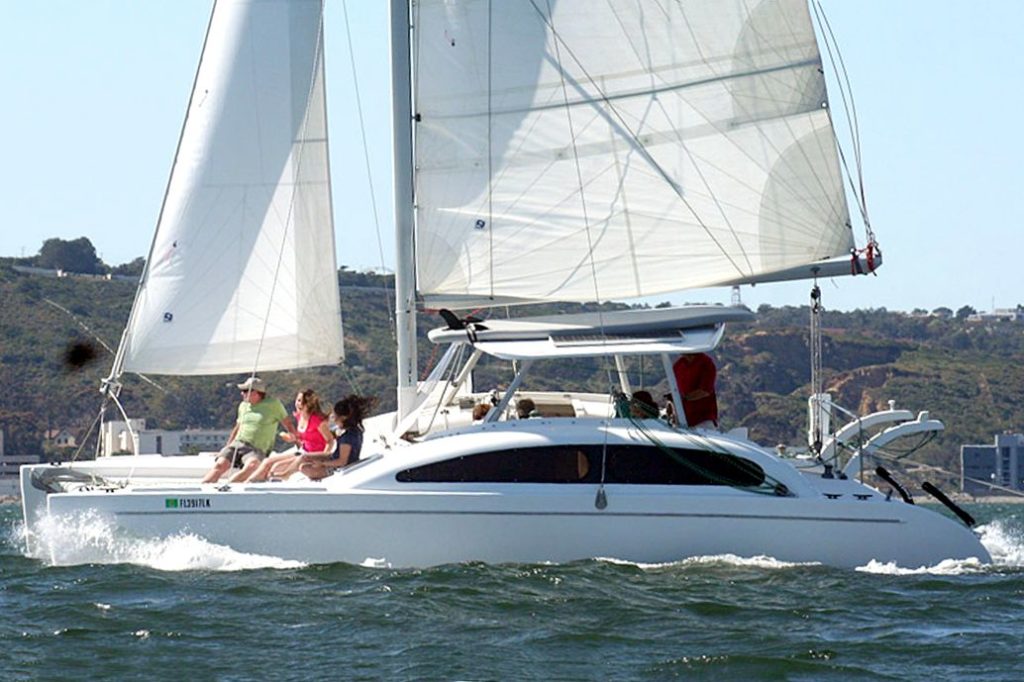
One of the more versatile and clever cats ever created, the central feature of the cool Maine Cat 30 is the open bridge deck/living room sandwiched between the hulls and canopied by a rigid, permanent hard top (the comfortable accommodations/ staterooms are stationed in the hulls). Ideal for a winter in the Bahamas but with the ability to sail offshore, it’s a boat for all seasons and reasons.
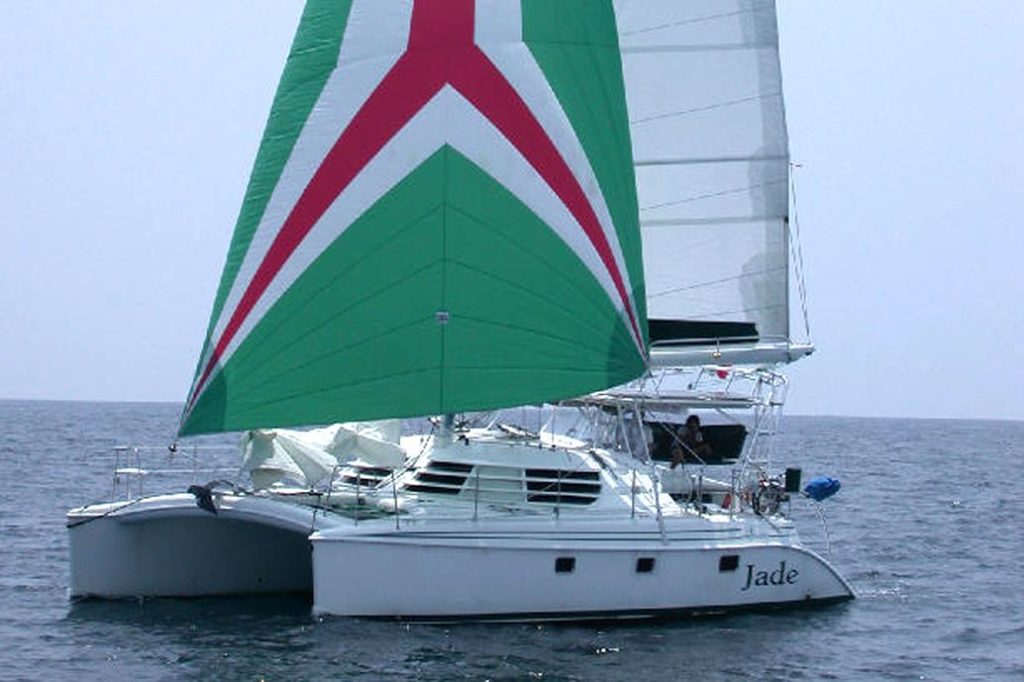
Built in Florida and beloved by the owners of the over 120 boats built during the company’s existence from 1993 to 2009, the Manta Catamarans range included 38-, 40- and 44-foot cats. For this exercise, however, we’re heralding the original Manta 42, which won the Best Value Overall prize in CW’s 2001 Boat of the Year contest.
Moorings 4800/Leopard 48
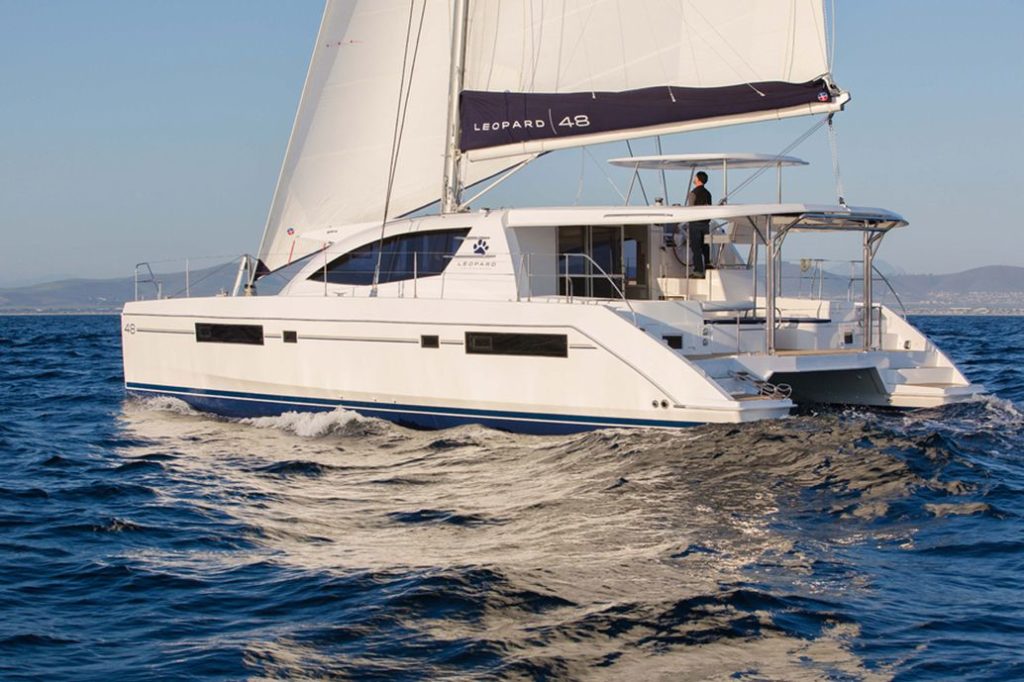
Another Leopard/Moorings collaboration built by the wizards at Robertson & Caine (though this boat was designed by fellow South African Alex Simonis), the Leopard 48 was another CW Boat of the Year winner with all the contemporary bells and whistles: forward cockpit, flybridge helm station and solid hardtop dodger, just to name a few.
Click here to read more about the Leopard 48, and click here to see more images.
Nautitech 441
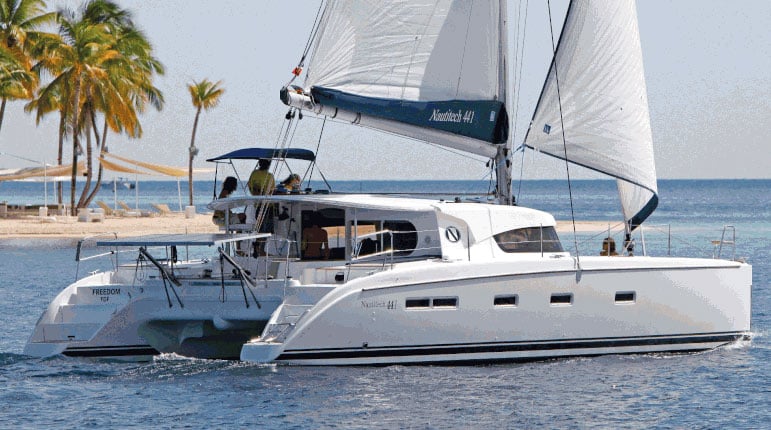
The Best Multihull Under 45 Feet: So said the CW judging panel in the 2013 Boat of the Year competition, regarding the Nautitech 441. But what makes this versatile platform so intriguing are the different helm set-ups. The 441 employs a single wheel, to starboard, ideal for solo sailors, while the 442 has a pair of helm stations aft.
Click here to see more Nautitech Catamarans.
Outremer 5X
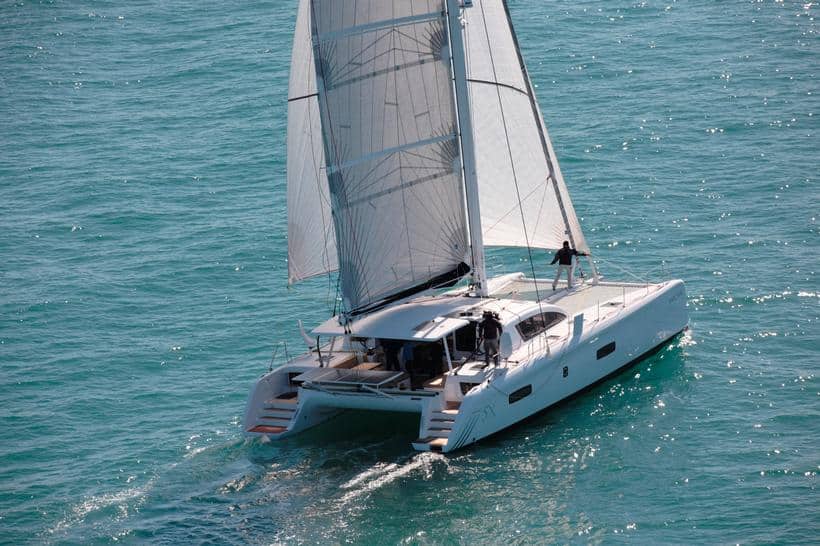
A state-of-the-art all-oceans cat that exemplifies how far multihull design has come, the 59-foot Outremer 5X was a winner on both sides of the Atlantic, taking top honors in the European Boat of the Year competition in 2013, and following up as the Best Full-Size Multihull in CW ’s contest a year later.
Click here to see more cats from Outremer.
St. Francis 50
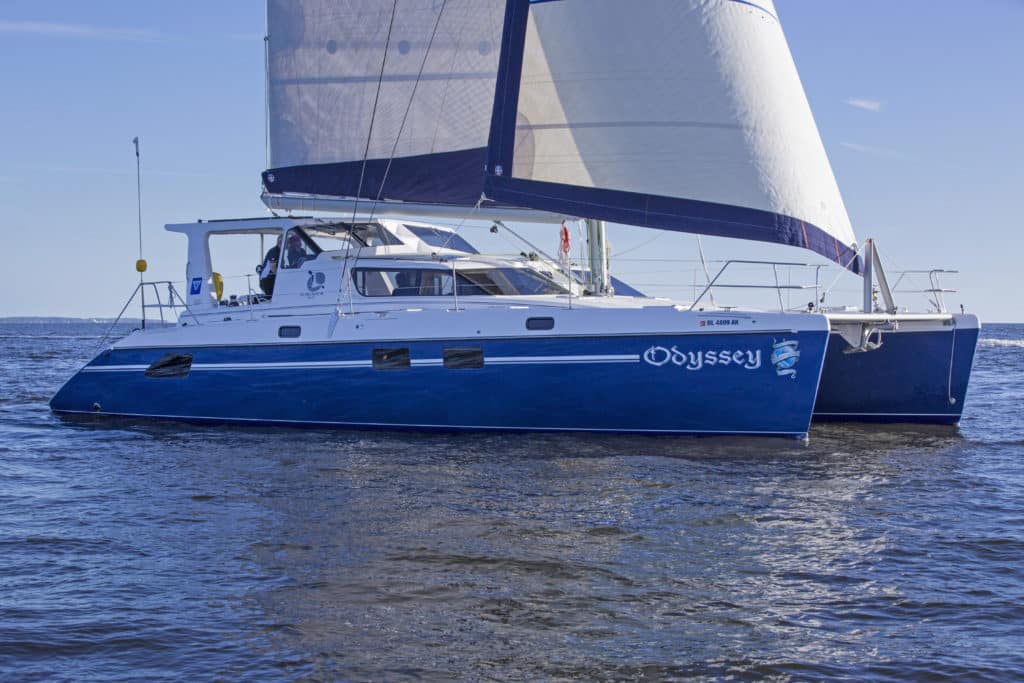
The flagship of the proud St. Francis line – built in South Africa since 1990 to designs by local legends Lavranos Marine Design – the St. Francis 50 is another “luxury cat” that shares much in common with an earlier 48-foot sister-ship, but packs even more payload into its roomier lines.
Click here to read more about the St. Francis 50
Seawind 1000
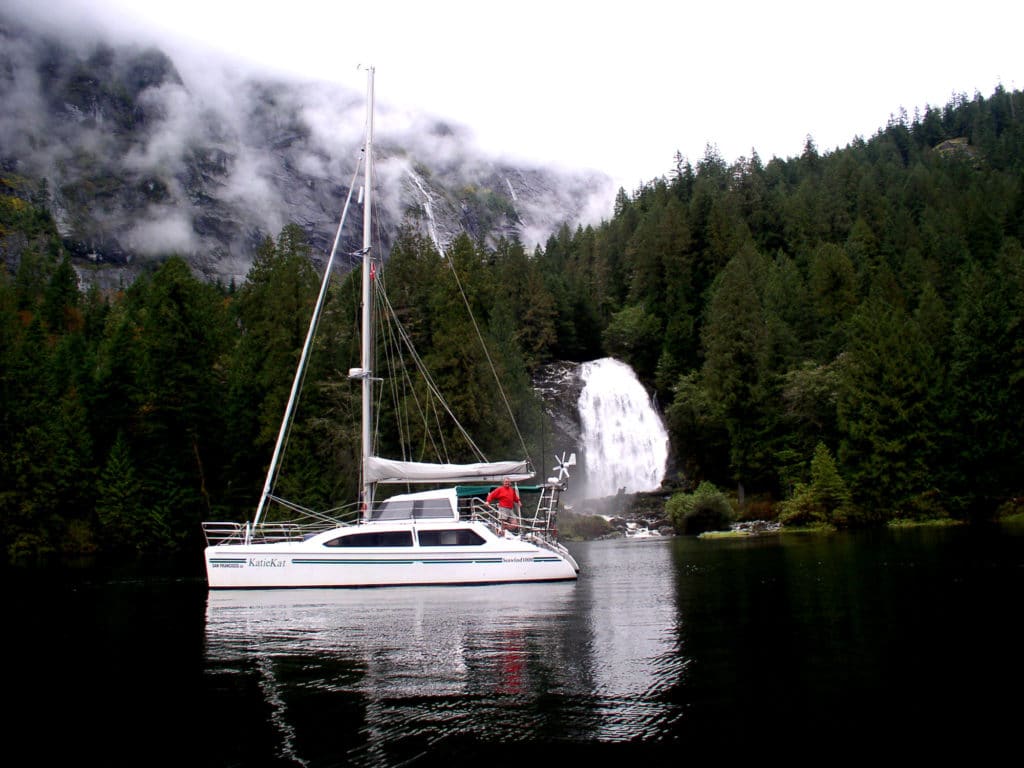
Founded by Aussie surfer and sailor Richard Ward in 1982, the 33-foot Seawind 1000 is easily the most popular cruising cat ever built in Australia (the company has since moved its manufacturing and management operations to Vietnam). Roomy and airy, these cats dot the coastline of eastern Oz.
Seawind 1160
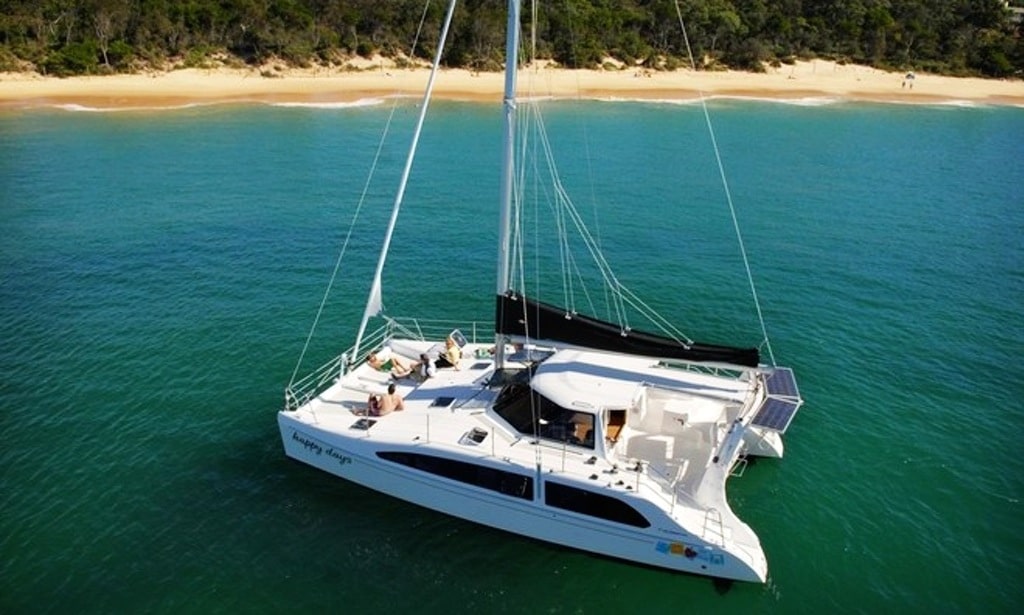
If the Seawind 1000 was a minimalist approach to cruising cats, the 38-foot Seawind 1160 is the flip side of the coin, a full-fledged long-range voyager. Among the reasons it was named CW ’s Most Innovative boat for 2007 is the unique “tri-folding” door that stashes overhead to open up the saloon and cockpit into a spacious living area.
Click here to read more about the Seawind 1160.
Sunsail 384
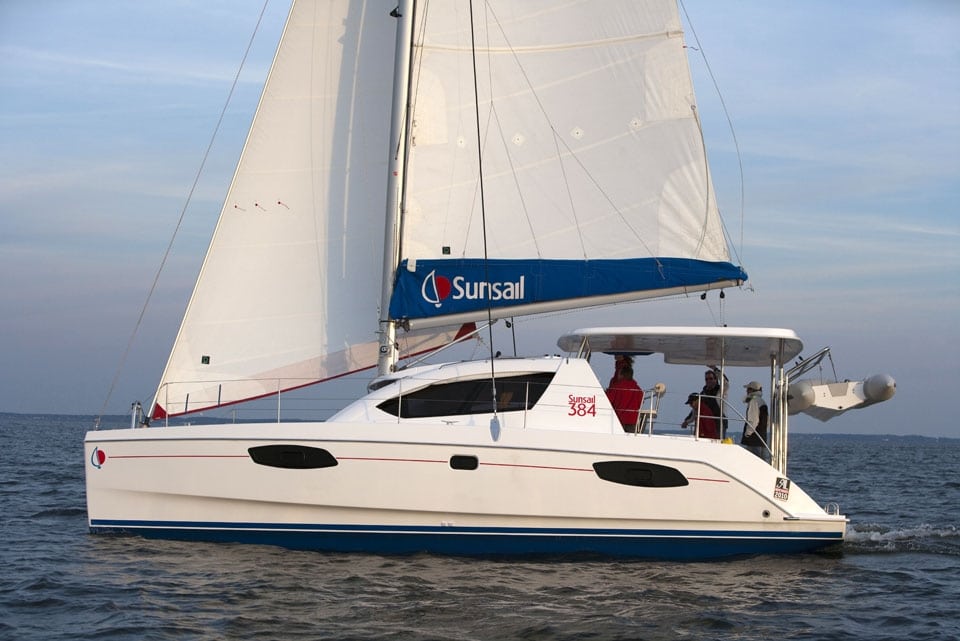
Every sailboat is a compromise, and in the case of the Sunsail 384 (also sold privately as the Leopard 38) that’s a good thing, because designers Morrelli & Melvin and builder Robertson and Caine got the balance just right with this relatively small catamaran. With four cabins, the 384 can carry the same size bareboat charter crowd as her larger siblings, but does so with a decided bounce in her step. Named CW’s Import Boat of the Year in 2010, you can gauge the success of the design by the grins on the crew as they barrel down Sir Francis Drake channel in the British Virgin Islands.
Victoria 67
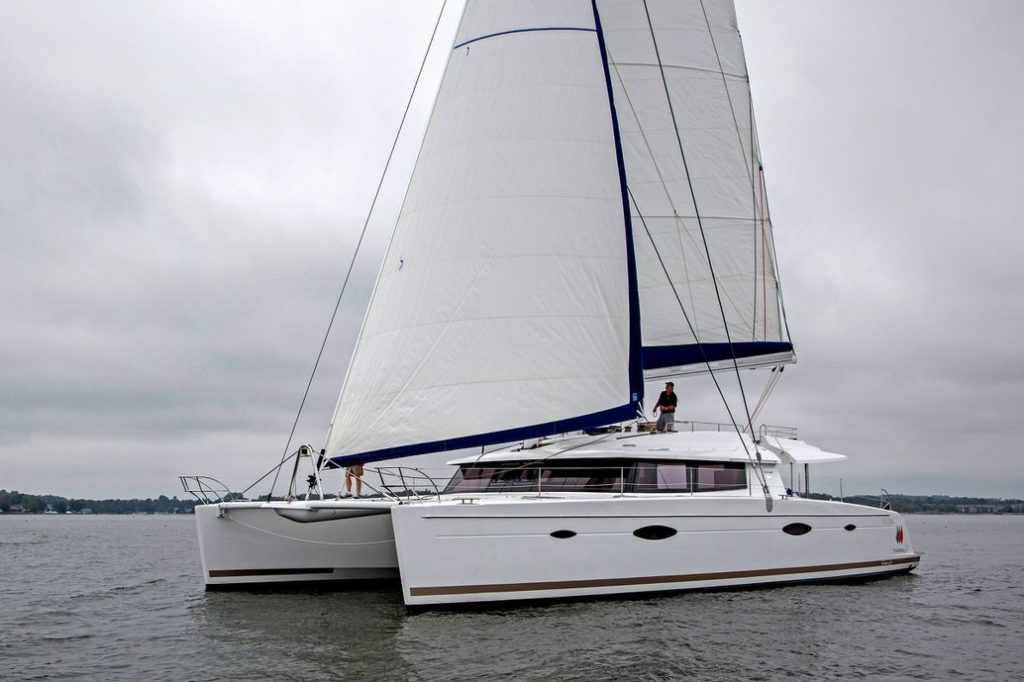
The French design office of Berret Racoupeau drafted the lines of Fountaine-Pajot’s new flagship, introduced in 2013, a magnificent world-girdling voyaging catamaran. Like other giant cats launched in recent years, the boat features a sensational upper deck with all sail controls, helm and lounging stations.
Click here to see more images of the Victoria 67.
Wharram Tanaroa
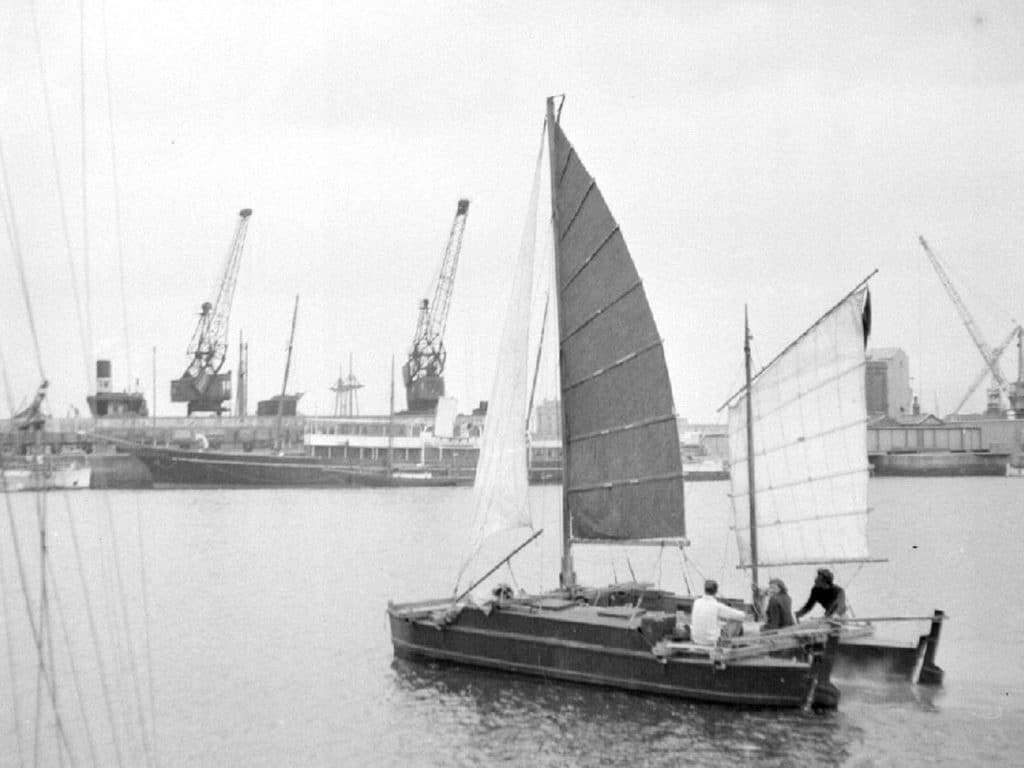
No list of influential multihulls would be complete without the work of James Wharram, and while Tangaroa wasn’t a production cat by any means, it showcases the British designer’s respect for ancient Polynesian craft. Wharram sailed this 23-foot-6-inch “double-hulled canoe” across the Atlantic in the 1950s, and sold countless plans for similar boats for decades afterwards.
- More: Boat Gallery , catamaran , multihull , Sailboat Reviews , Sailboats
- More Sailboats

Balance 442 “Lasai” Set to Debut

Sailboat Review: Tartan 455

Meet the Bali 5.8

Celebrating a Classic

Kirsten Neuschäfer Receives CCA Blue Water Medal

2024 Regata del Sol al Sol Registration Closing Soon

US Sailing Honors Bob Johnstone

Bitter End Expands Watersports Program
- Digital Edition
- Customer Service
- Privacy Policy
- Email Newsletters
- Cruising World
- Sailing World
- Salt Water Sportsman
- Sport Fishing
- Wakeboarding

10 Best Catamarans Under 100k: The Affordable Dream!
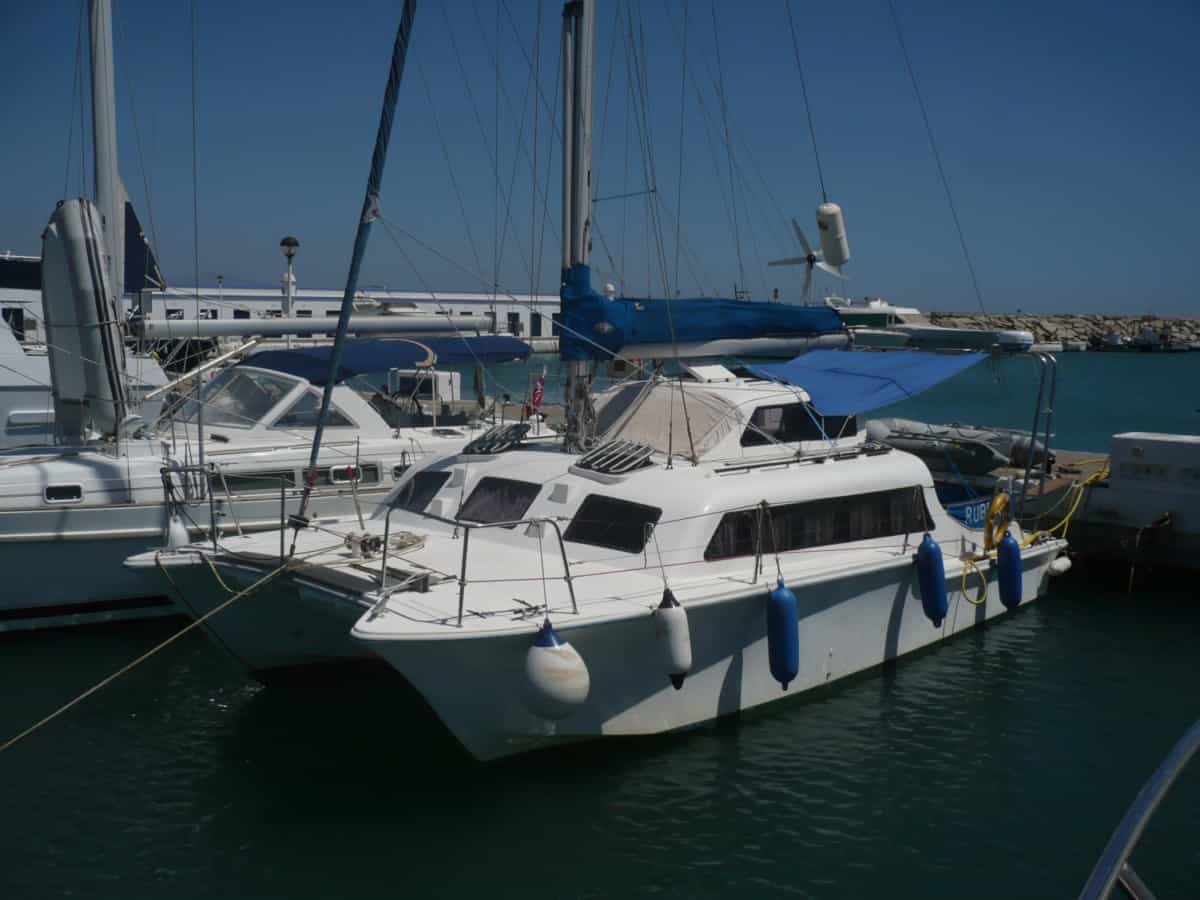
As an Amazon Associate, we earn from qualifying purchases. We may also earn commissions if you purchase products from other retailers after clicking on a link from our site.
I have been told that good catamarans under $100 000 are impossible to find, and since I’m not a millionäire but I love catamaran sailing, I said, challenge accepted!
The best catamarans under 100k include the Prout Quest, the Gemini 105Mc and 3200, the Dean 365, Tiki 38, and the Prout Snowgoose 37. All these catamarans are good but they are best suited for different types of sailing.
In this article, ill show you some of the most promising cats under 100k; this article could be a starting point for finding yourself an affordable cat. And if you’re not attracted by any cats on this list, at the end of the post, you will find factors to consider when buying a cheap cat so that you may do your own assessments of boats that are interesting to you.
Table of Contents
Prout Quest
The Prout Quest is a classic catamaran boat from Prout, cruising catamaran boat manufacturers who dominated the market in the 1970s and 1980s. Though these boats are no longer in production, the Prout Quest is a seaworthy catamaran that boasts an enviable reputation.
This boat is suitable for couples or single sailors looking for a liveaboard as it sports a spacious salon. In addition, there’s good access to natural light, a functional galley, generous storage, plus the boat is sturdy and excellent for solo sailing. Also, it’s pretty gentle and comfortable on a reach or downwind.
If you want more info on the Prout Quest , check this article out.
The main downside of the Prout Quest is that it doesn’t have much headroom. You can get this 33ft (10.05m) pre-owned catamaran for about $55,000.
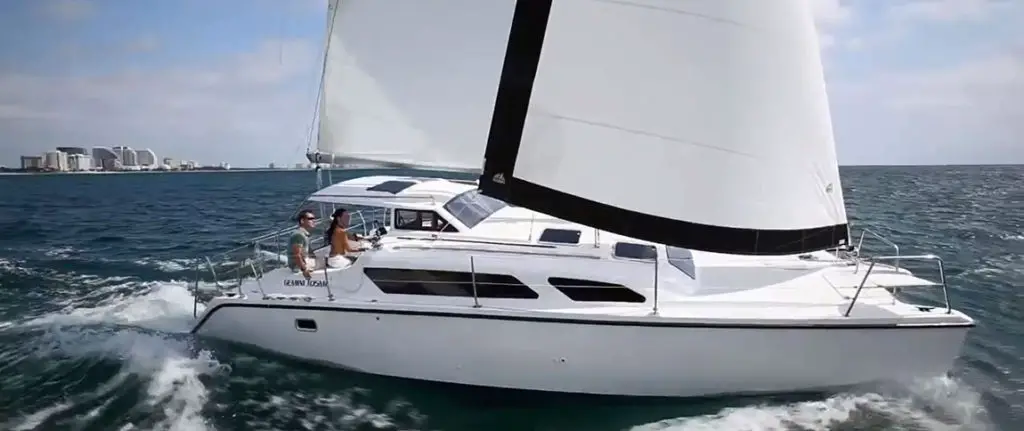
Gemini 105Mc
Gemini catamarans boast a refined manufacturing process that results in attractively designed catamaran boats. They feature a pleasant performance, practical handling, livability, and good value for the money. Gemini 105Mc itself is a popular model with a legendary sailing performance.
The boat has roomy, light, and airy accommodation areas, while the deck layout and rig provide a stable and safe platform. Gemini 10Mc comes with centerboards and kick-up rudders that allow you to venture into shallow waters and a beam that allows anchoring in a regular slip.
I have written an entire article on Gemini cats , so if you want more info click this link.
While this boat is no longer in production and has been replaced by the Gemini Legacy 35, you can get pre-owned versions starting from around $89,000.
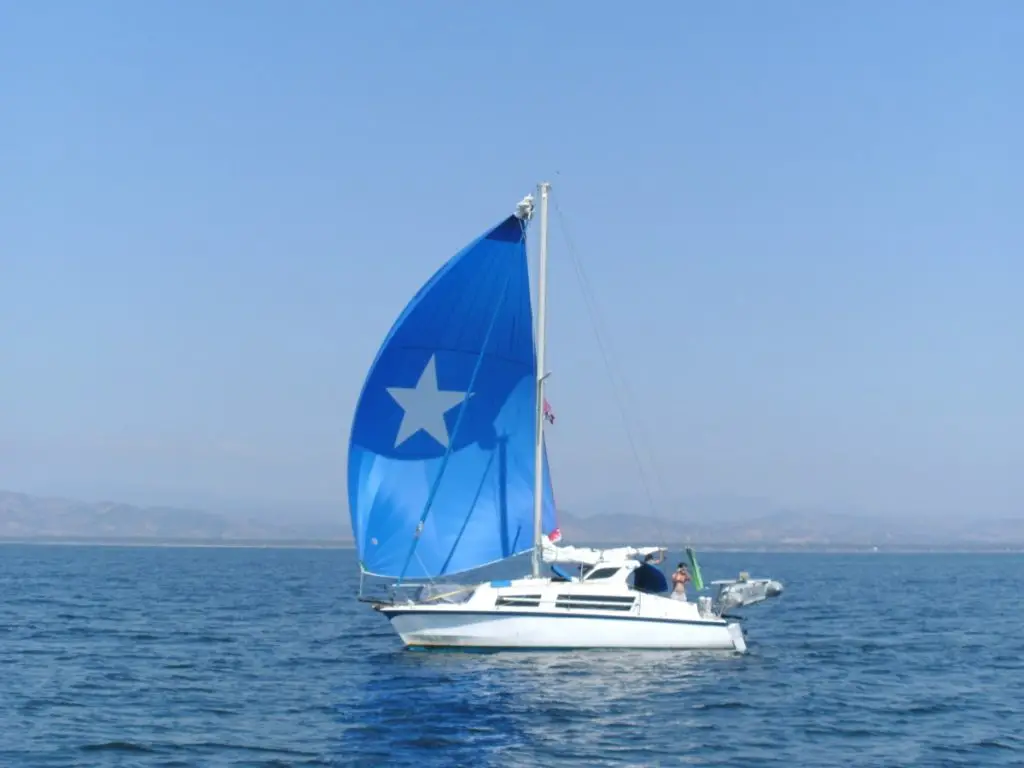
Gemini 3200
For a coastal cruise, the Gemini 3200 delivers a superb sailing performance. The boat features the basic comfort and spacing of a budget catamaran and is pretty easy to sail and motor single-handed. It also comes with centerboards designed to retract without breaking upon hitting an object.
The Gemini’s beam allows it to fit into a standard size slip, thus reducing marina fees while the outboard motor makes for a quieter boat. This light boat performs well downwind or on a broad reach but can be challenging to maneuver cross currents and crosswinds without centerboards. It’s also not ideal for bluewater sailing (more info on bluewater cats here).
The Gemini 3200 goes for below $100k.
For a review of the most popular Gemini boats , go here!
Dean 365 catamaran is incredibly spacious and boasts plenty of headroom, making it well-suited for a cruising family. This boat comes with 4 cabins, a big saloon, a huge galley, and generous storage making it safe, stable, and comfortable for open sea cruising and long voyages.
The Dean 365 is also on my list of best cats between 100 and 200k .
High-quality cabinetry characterizes the interior, and a comfy u-shaped dinette is located in the main saloon. There are additional lockers built within the quarter berth floors, creating additional storage space for all your sailing needs.
Dean 365 is not a fast boat, and its bridgedeck clearance is below average , but its downhill cruising is impressive. This model is rare, but when available, you can get the boat for between $50,000 to $100,000.
Prout Snowgoose 37
The Snowgoose 37 is popular with bluewater cruisers looking for a robust, seaworthy, and budget-friendly catamaran. Though this boat is not a performance catamaran, it’s a strong ocean crosser that boasts an unrivaled circumnavigation record. The cat sails pretty well despite her length, performs well in light air, and handles rough weather rather impressively using her canoe sterns.
If you are confused with all the terminology, don’t worry, so was I, to get up to speed I would recommend you to either buy the book The Complete Guide for Cruising Sailors (here’s a link to amazon ) or read my article on catamaran parts .
Because of the aft mast rig and all control lines redirecting back to the cockpit ( catamaran parts explained here), the Snowgoose is relatively easy to sail single-handed. The boat is easy to maneuver into a marina and fits nicely into standard berths, further lowering your costs. Even better, the flat keels plus narrow beam makes the Snowgoose easy to beach – and keeps a lid on your maintenance costs.
The Snowgoose 37 has her share of downsides; minimal salon headroom, a slow speed of 6 knots, a low bridgedeck resulting in slamming in rough seas, and a solo engine that renders the boat less maneuverable than twin-engine cats. Still, the boat offers good value for money and you can get one for under 100k.
Tiki 38 is a James Wharram design catamaran. This reasonably priced bluewater catamaran ensures your safety on the high seas, performs well, and is ideal as a family cruising boat. It has 2 double cabins and single cabins, a navigation station, galley, toilet cum shower, and ample storage space for all your stuff in the bow and stern.
These cats are sleek, light, fast, and easy to handle. They are fun to sail in open water since they are highly maneuverable, and their shallow drafts allow you to explore new places. The boats also feature a large deck and a deckpod with a bunk for shelter during open sea cruising. With $100,000, you can get yourself a Tiki 38.
Crowther Spindrift 40
The Crowther Spindrift 40 is an excellent performance catamaran that you can buy without making a big dent in your pocket. Designed by the renowned Australian designer Lock Crowther, Spindrifts are sleek, fast, and capable of sailing quickly in light winds. They have good bridgedeck clearance, and though slamming occurs in rough seas (more on rough sea sailing here ), the boat sails quite smoothly in normal conditions.
One key thing to note here is that these cats are generally old, so it’s important to examine the beams, decks, and boat systems carefully before purchasing one. They also have shorter headroom, plus you have to leave the main cabin and get into the cockpit to enter either of the two hulls. This can be a bit tiring if you are not young or agile.
Another issue is the Spindrift’s hulls are pretty narrow, so you need to keep off excess weight to avoid hampering the vessel’s sailing performance. On the plus side, the engines are easy to access, which makes your maintenance work more manageable.
You can sail the Spindrift alone or with a minimal crew as the boat is easy to handle even during heavy weather. What’s more, there’s great visibility from either of the two helms. In light winds, the cat performs amazingly well, and maneuvering is simple and straightforward. Plus, the boat can fit easily into marina slips and is pleasantly comfortable at anchor.
The Spindrift is not as spacious as the newer model catamarans, but you can still have guests over as the seating space is more than adequate. And the best part? You can purchase this beautiful boat for less than $100K.
This is also the same boat that the youtube channel Tulas endless summer used to sail.
Shuttleworth Open 35
Another catamaran that fits within the $100K budget is the Shuttleworth Open 35. This 35 foot (10.66m) cat is an open-bridgedeck John Shuttleworth design, built in the US. An excellent performer, the vessel bears the proven ability to cross oceans with great poise and sail in excess of wind speed.
Large enough to fit a crew of 6, the boat’s impressive construction features composite foam, epoxy resin, e-glass, carbon fiber reinforcements, kick-up rudders, and daggerboards on each hull. The other exciting features include flush decks, an open cockpit, rounded bilges, and companionways with steps leading down to the cabins in the hulls.
I discuss interior layout in one of my other posts here.
Below decks, the accommodation consists of 3 double berths – 2 to port and 1 to starboard. Each hull contains a head with a holding tank, while the galley comes equipped with a stove, refrigerator, and microwave, making the Shuttleworth comfortable to live in.
This catamaran is a sailor’s dream; it can sail, race, and cruise too. And whichever option you go for, the boat’s capabilities are sure to impress you as this stylish boat can clock pretty high speeds.
$80-100,000 and you’ll secure a pretty cool boat!
Woods Banshee
The Woods Banshee is a small but powerful cruiser-racer catamaran designed with a 35 foot (10.66m) hull molding. Richard Woods, the boat’s designer, opted for a vast beam, a characteristic feature quite unlike other 35-foot sailing catamarans whose beams are typically around 17.5′ (5.33m). At 20.5′ (6.24m), the Banshee’s beam is indeed pretty wide.
But there’s a good reason for having an extra-wide beam on this offshore cruising cat. It dramatically increases the vessel’s accommodation space, allows for reduced wave interference between the two hulls, and enhances the vessel’s stability resulting in minimal heeling. While the Banshee comes fitted with an outdoor engine, the last two features allow the Banshee to deliver a sailing performance similar to that of a larger-sized catamaran.
This post on catamaran capsize will better your understanding of catamaran stability, so check that out!
The Banshee’s high-thrust outboard allows the boat to cruise at between 6-8 knots (11.11-14.82 km/h) while the V-shaped, softly rounded hulls help it move with great ease. You can even withdraw the outboard from the water while under sail whenever there’s a need to eliminate drag.
This light foam-core catamaran has an excellent performance windward thanks to its daggerboards and outboard engine. Furthermore, bridge deck slamming, a common challenge with cruising catamarans in a non-issue with the Banshee.
Without a doubt, the Banshee is one spacious boat. Behind the sizeable sliding hatch is an expansive salon, there’s well-spaced accommodation, adequate headroom, and you have access to a large cockpit. Plus, there’s extra seating space on the bridgedeck saloon for dining and socializing. The full-sized navigation station boasts ample storage space while the bridgedeck plays host to a master bunk and a collapsible settee that comes in handy at anchor.
The Banshee is a pocket-friendly cruising catamaran that delivers superb performance, and you can get one at around $85,000.
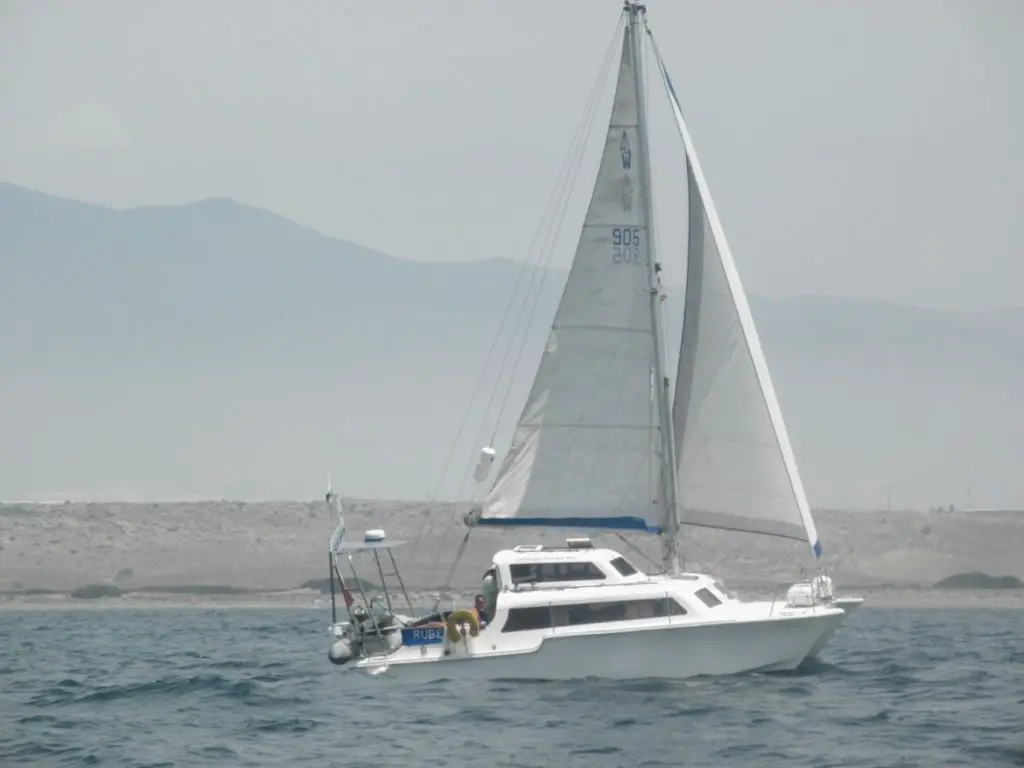
Catalac 10M
Catalac Catamarans are British sailing vessels from the 1980s. These sturdy, well-built cats are designed to handle hostile seas, and the Catalac 10M is among the best family and couple liveaboard cruisers in the Catalac family. Excellent at offering a safe, comfortable, and spacious floating home over an extended period, they have minimal maintenance and operating costs. As a result, these rare but affordable boats are much sought after.
The Catalac 10M is a 34 foot (10.36m) well-thought-out, quality cat that’s as strong as a battleship. Its spacious saloon contains a sizable u-shaped settee plus an expandable rotating table that can accommodate up to 8 people. The interior is well-lit owing to the large windows that also provide panoramic views. It also has ample storage space and spacious countertops.
Double thick fiberglass makes the boat hulls undeniably strong , and it’s no wonder these boats are still crossing oceans today. The boat is exceptionally stable due to the short rig and the hull’s hard chine design. If your budget is about $100,000 , you can get yourself one of these unique boats.
How To Buy the Best Catamaran
Is there a perfect catamaran? Not exactly. The thing is, selecting the perfect catamaran is a personal choice. And like buying a home, you might need to compromise, customize or sacrifice one thing or the other. Having said that, there are guidelines you need to follow to avoid making painful mistakes.
I would also like to recommend two books that have helped me to better understand catamaran characteristics. The first one is called The complete guide for cruising sailors (here’s a link to amazon ). It is a good basic introduction to hull shapes and the balance between performance and comfort. It also includes a lot of pictures.
If you are more interested in how to sail and manage your catamaran, I have another recommendation for you, this one covers a lot of tips and tricks such as how to prepare your boat for offshore cruising or what to think of in case of capsizing. One thing I don’t like about Multihull seamanship is the graphics, they are hand-drawn and feel cheap but the information is great.
Let’s explore some of the important factors to consider when making a purchase decision in order to get the best possible catamaran.
Factors To Consider When Purchasing a Catamaran
When looking to buy a catamaran, there are several crucial factors you need to consider apart from your budget. Below is a brief discussion on each essential factor.
What Is the Intended Use?
How do you plan to use your catamaran? Do you intend to spend most of your time cruising offshore, docked at the marina or anchor, or do you want to live onboard?
For instance, a spacious Lagoon catamaran might be the perfect luxury liveaboard with creature comforts like a refrigerator and air conditioning, but it could turn out slower underway. This means it would not be an ideal choice for someone interested in long-distance cruising.
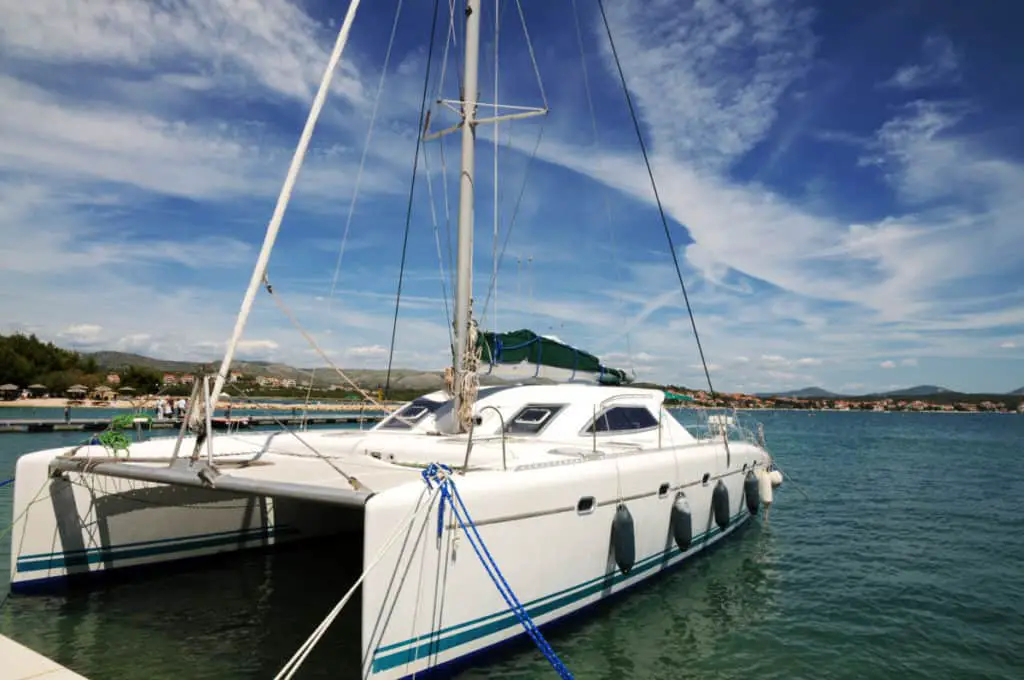
Comfort Versus Performance
Modern catamarans come equipped with luxurious amenities and top-end finishes like Corian countertops. But while these gorgeous extras add to your comfort level, they translate to additional weight which affects your catamaran’s cruising performance. For instance, this weight can lead to increased wave slamming in heavy seas, which can be quite uncomfortable.
Comfort, performance, or low price, you only get to pick two (unless you’re filthy rich ;))
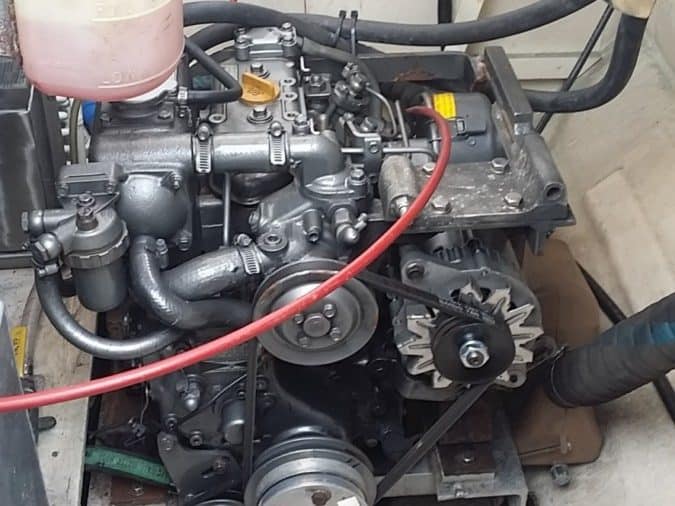
Your Mechanical Skills
When buying a pre-owned boat, it’s best to buy one whose owner maintained it in great condition, particularly if you are not good with your hands. This is because your repair and maintenance costs could go through the roof. However, if you are mechanically inclined, you can do the repairs, thus significantly reducing costs.
Your Budget
You will need to set a realistic budget for your new catamaran. Doing so will help cover the cost of buying the boat and allow you to handle other related payments. These include paying for insurance, registration, marina fees, upgrades, maintenance, and repairs.
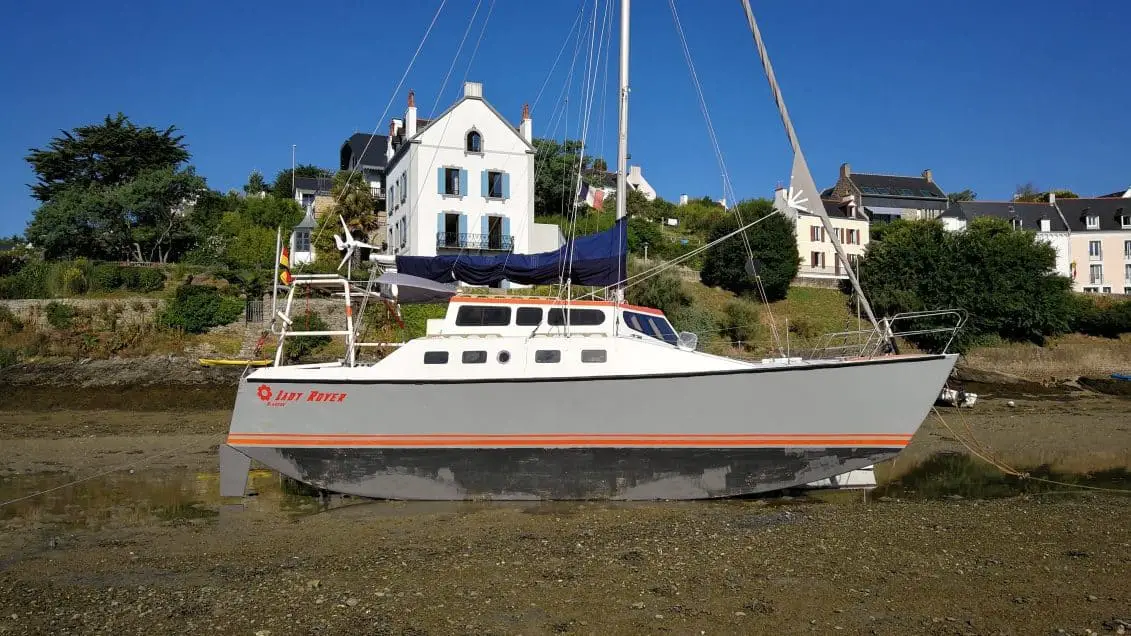
Daggerboards Versus a Fixed Keel
Most cruising cats sport fixed keels. This enables you to get more usable space in the hulls and also makes it easier to beach the boat. The keel is also less expensive to fabricate and adds more buoyancy to your boat. The downside is that you shed a couple of degrees when sailing upwind. On the other hand, catamarans with daggerboards sail faster and tend to make less leeway.
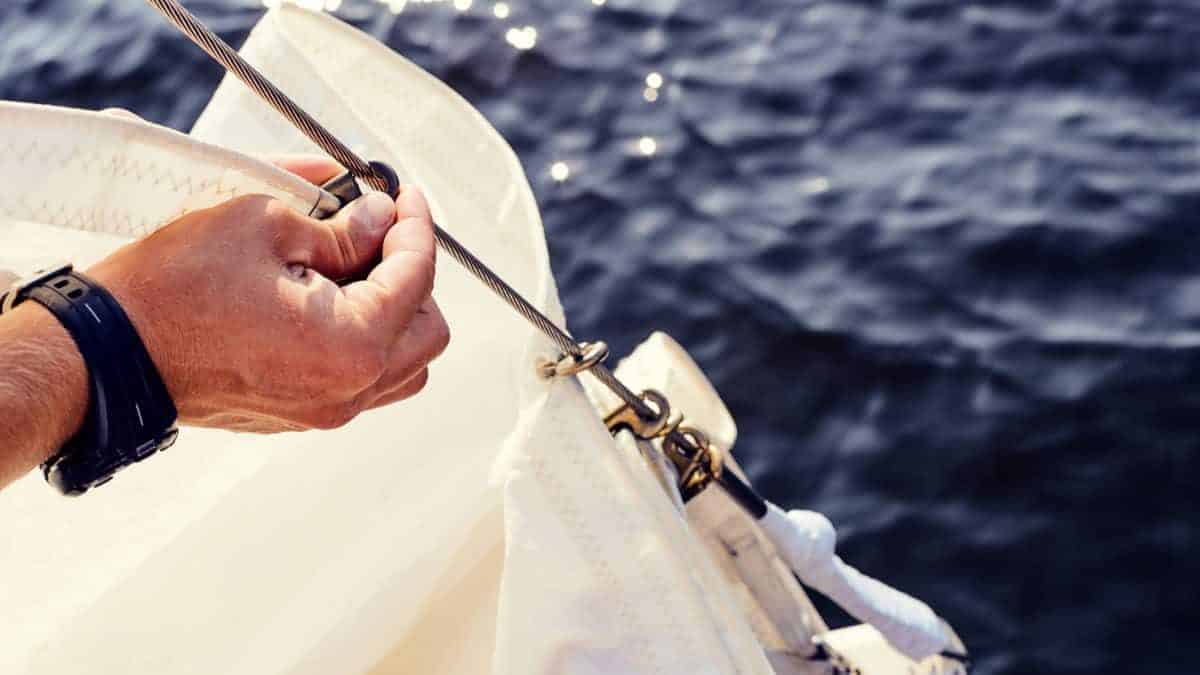
Your Sailing Skills
Catamarans are easy to handle. Besides, you can take a sailing course to improve your skills. Still, you might want to consider going for a catamaran that’s rigged for single-handing. Such a boat comes with electric winches and, at times, a self-tacking jib.
Final Thoughts
Buying a catamaran is a significant investment. Thus, it’s essential to do your due diligence first before making a final commitment. Start by doing your research on the kind of boats you’re interested in, use this list as a guide to help you make the right choice, then find all the relevant information you can to make an informed decision.
- Catamaran Guru: Top Ten Tips for Buying a Catamaran
- Multihull Solutions: What to look for When Buying a Used Catamaran
- Multihull Company: The 14 Biggest Mistakes When Purchasing a Used Catamaran…
- Multihull Company: Boat Details
- Catamaran Site: Gemini 3200 Owner Review…
- Catamaran Site: Catalac Catamarans for Sale By Owner
- Katamarans: Prout Snowgoose 37 Review
- Wharram: Tiki 38 Self- Build Boat Plans
- Katamarans: Tula’s Endless Summer: Crowther Spindrift 40 Owner’s Review
Owner of CatamaranFreedom.com. A minimalist that has lived in a caravan in Sweden, 35ft Monohull in the Bahamas, and right now in his self-built Van. He just started the next adventure, to circumnavigate the world on a Catamaran!
Leave a Reply Cancel reply
Your email address will not be published. Required fields are marked *
Save my name and email in this browser for the next time I comment.
Recent Posts
Must-Have Boat Gear for Catamaran Sailors!
Sailing is probably the most gear-intensive activity I've ever done; there are so many decisions to be made about what gear to buy now, for tomorrow, and what to definitely never buy. The gear on...
6 Best Trailerable Trimarans For Bluewater and Coastal Sailing
Having a boat costs a lot of money, even when you are not using it, marina fees, etc. And once it is in the water most sailors never go very far from their "home marina" and sailing will be somewhat...
Basic Summary: FREEBIRD 2016, GEMINI, Freestyle 37

Gemini Freestyle 37 Catamaran for sale. The Gemini Freestyle 37 Catamaran is a completely new concept in boat design and customization. In a world where flexibility is key, this new design provides the platform on which to build your sailing dreams - tailored however you see fit. Your Gemini Freestyle 37 can be outfitted as a basic family sailing catamaran, a day-charter boat, or maybe your vision includes luxury appointments for relaxation and dining including chaise lounges, an outdoor galley and wraparound bar. Whatever your idea of the perfect boat is - the Gemini Freestyle 37 is the most flexible and accommodating design available. Of course; her very essence is built upon the most popular cruising catamarans ever built, the Gemini 105Mc and the Legacy 35. To be able to simply get people out on the water to sightsee, snorkel, or just enjoy a day out sailing; the boat is perfect for either single owner/operator charter or a larger venture with multiple boats. The Gemini Freestyle 37 can cater to multiple uses within the day charter business as well; from taking as many people as you want out sailing to catering high-end parties. One of the biggest advantages of this version as a business venture is the low cost of operation. To be able to simply change out the furniture and the outboard means the boat will always look new. New Raymarine autopilot installed last year.
FREEBIRD - Full Specifications INQUIRE ABOUT THIS BOAT Email me when price drops
Marine News from the Great Lakes
Commonly asked questions about cruising catamarans.
Published: Friday, April 26, 2013 7:00 am By: Bay Breeze Yacht Charters

Why aren't there more catamarans on the great lakes?
We've been asking ourselves this for years and decided that it's a 3-part answer:
First there is delivery, and typically the wide beam is a problem. The boat would have to travel on its own bottom to get to the Great Lakes. And considering that the largest catamaran manufacturers are in South Africa or France, getting to mainland America is one thing, then going further to the Great Lakes adds more time and a lot more to the cost for delivery. The exception to this is Gemini Catamarans, which are now built in Florida and purposely have a 14' beam making it one of the only cats that can be trucked overland. Our display Gemini at the Chicago show took 2 days via truck and was a fraction of the normal cat delivery cost.
Second is the issue of docking and servicing. The cost can get steep, as cats normally need T-docks or double-slips. And when it comes time for haul out, a very large travel lift is required (because of the beam, not the weight) or a crane is used. Again, the exception to this is the Gemini Catamaran line that, at 14' wide, can fit in a standard slip and can get hauled like a monohull. We actually hauled our Gemini 105Mc at a township park launch ramp.
Third is price. Straight up, it's hard to justify the price of a typical production cat in such a limited sailing season. And again, I revert back to the 35' Gemini Catamaran because it's priced very comparably to a monohull and, here's the kicker - its about $150,000 less than a catamaran with "standard proportions" like the Mahe 36.
How long have cruising catamarans been around?
The Polynesians are well documented for crossed oceans in catamarans hundreds of years before Columbus started sailing. Ocean-going catamarans have been around a long, long time on the other side of the Pacific, we just never heard those stories growing up because America’s maritime history started across the Atlantic. A western multihull pioneer, James Wharram ( www.wharram.com ) is a life-long hippie, sailor and designer of catamarans. He started building simple plywood and epoxy catamarans in England and sailing them around the world in the 1940's and continues to this day. I've seen Wharram cats everywhere from New Zealand to Traverse City. It’s interesting to note that a traditional tall ship will rarely get a stability certification from the USCG without radically modifying its ballast and design but a catamaran usually passes with flying colors. The replica tall ships that travel port to port in the name of historic interest have been modified extensively below the waterline to safely carry on their missions. Early maritime explorers with tall ships may have been bold but they weren’t the best naval architects.
How does a Cat handle steep, choppy lake waves?
A cat will feel different from a monohull in most areas; under sail, tacking, docking, etc, and so it goes that it will feel different in a lake chop. Anyone that says a catamaran can't handle steep, choppy waves on the Great Lakes either hasn't actually sailed a cat on the Great Lakes or hasn't sailed a recent production model. Cats have evolved immensely in the last 20 years with the last 5-10 years being the most evident. Modern production cats have addressed the “slap” effect with higher bridge deck clearances and "nacelles" which are long, stringer-like protrusions than run underneath the bridge deck to split waves and cushion the boat along with curved surfaces under the bridge deck that deflect waves. Twenty years ago, few cat manufacturers were building these design features to prevent the “slap”. Today, you’ll see it in most every cat design.
How fast will they sail?
Our Gemini Legacy 35 hit speeds of almost 60 mph...on the truck enroute to Chicago... The real answer to this is that cats are only faster than monohulls on certain points of sail. If you raced a cruising monohull and a cruising cat on a triangle course, they would both end up at the finish line about the same time. We're comparing cruising boats with displacement hulls here so all you racers settle down. Typically the cat would lose ground going upwind but gain it on the reach and broad-reach.
Why do they struggle upwind?
That's just how it goes when you're trying to sail a "patio" into the wind and I wish there was a nifty technical way to put it. It’s a product of beam. But again, the exception to this is the Gemini Legacy with its relatively narrow beam that will sail an "honest to gosh" 40-45 degrees off the wind before giving up speed. A great moment in my life that I like to compare to my wedding day and even the birth of our child was when I was sailing a Gemini 105Mc upwind with two production monohulls nearby. After a while the monohulls, with their flogging sails, couldn’t keep the same course and resorted to motoring while I smugly sailed on, close-hauled, sans diesel, maintaining my speed and dignity. That was a first for me in my catamaran career and I'll bore my grandkids to death with that story.
What about flipping over?
Yes, it's possible, and it's also possible that you could get assaulted by Big Foot during your next walk in the woods. In the right (wrong) conditions a catamaran can flip over but these would be the same conditions that would capsize a monohull. All these things are theoretically possible (Big Foot being the most likely scenario) with the right mix of wind and waves but it’s of no more a concern in a cat than in a mono. Cats will behave differently in extreme weather, as will different monohull designs, and cats will require sea anchors, drogues, and other tactics to keep things safe, just as monohulls would. Everyone has heard of a story where a catamaran flips over but for every cat that flips, there many more monos that roll and most of those monos don't recover and eventually sink or are disabled to the point of needing rescue. It's just that the cat makes better news. Don’t get me wrong; it's a good question if you are seriously considering crossing oceans frequently. But if you want to go coastal cruising with the occasional bluewater passage, capsize shouldn't be any more of a concern than on a monohull.
How much will it heel?
Not much, maybe 5 degrees of heel but that’s about it. In 25 knots of wind, both sails reefed, beam reaching in 3-5 foot waves my drink never left its spot on the helm – without a cup holder. Another testimonial is that my 2 year old frequently walks around deck without a stumble while underway. Cats are very good for families and those prone to seasickness.
Why haven’t I heard of Gemini Catamarans before?
Gemini has been building multihulls for about 30 years, most of that from a family operated facility just outside of Annapolis. The Gemini 105 is the most successful single-design catamaran ever produced with over 1100 hulls sailing the world. The reason they were somewhat of a sleeper company is that they did very little advertising and have been factory direct until a few years ago when they opened up a dealer network. The Gemini’s are now built at the Marlow-Hunter factory in Alachua, Fl and Bay Breeze is one of their first dealers introducing the brand to the Great Lakes.
Sailing is believing
Bay Breeze has several Gemini designs for sale and for charter in Traverse City, Michigan and can order Lagoon and Fountaine Pajot catamarans as well. We'll even set you up on a cat charter in the Caribbean on any make and model you choose. And with "Try Before You Buy" we'll reimburse your charter rate if you decide later to buy a catamaran. Call 231-941-0535, email [email protected] or visit us online at www.bbyc.com .

Go back | Show other stories
Most Recent Related Video
Browse Video Gallery
Keyword Search

Browse News by Region

Great Lakes

Lake Michigan

Lake Ontario

Lake Superior

Beyond the Lakes

Browse by Topic

Check the Map!

Check it out!

IMAGES
VIDEO
COMMENTS
Connect with us and other Gemini fans from around the world! ... All Catamarans; POWER RANGE; SAILING RANGE; RECENTLY LISTED. Recently Listed; Recently Reduced; MODELS. New Models. Gemini Freestyle Studio; Gemini Freestyle 399 Power; Gemini Freestyle 37; Gemini Legacy 35; Former Models.
The Gemini is also technically 3 feet shorter than the Tayana (34 feet vs. 37) but with the Tayana's bowsprit, it's more like 8 or 9 feet shorter in reality. The lighter weight of the Gemini also makes it much more responsive. And any full keel boat such as the Tayana, in the words of another Tayana owner, "backs like a drunken elephant.".
The best catamarans for sailing around the world include: Lagoon 42. The Fountaine Pajot Ipanema 58. Manta 42. Catana 50. Dolphin 42. Gunboat 62. These cats focus on speed, safety, and comfort for longer journeys. This article will show you the seventeen best catamarans for long journeys, and why they're the best.
Gemini catamarans are safe, stable, and reasonably priced, making them great all-around boats. Their freestyle line is ideal for day cruises or to be used as "party boats" due to their customizable design. Their Design Touch and Legacy boats can be used as cruisers or for extended vacations, depending on your needs.
Gemini Legacy 35. Made in America since 1981, the Gemini Legacy has proven to be the most family-friendly performance cruising catamaran in the world. View Boat Details. Gemini Freestyle 399 Power. We are reimagining the design brilliance of the Freestyle 37 as a power catamaran. View Boat Details.
Gemini production moved to FL in 2009 after the 2008 financial meltdown. In 2011, Gemini offered the Limited-Edition Design Touch TM models, whose upgrades included cherry veneer finishes, Corian countertops, and ducted air conditioning. In a partnership with Hunter Marine and a generous buyout from The Catamaran Company, Gemini was able to live on under the direction of Smith's daughter ...
Gemini 105Mc Design Touch - The World's Best-Selling Single-Design Cruising Catamaran since 1980. For over 27 years and over 1000 deliveries, the Gemini 105Mc still remains one of the most proven and popular catamarans ever built. Her sailing performance is legendary yet still manages to surprise unsuspecting newcomers. The accommodations are ...
It was eventually modified and reintroduced as the 105M, and the 105Mc is the most recent upgrade. With 800 boats on the water, the company claims to be the best-selling catamaran manufacturer in the US. In 2002 the company's 20 employees built and sold 54 boats, valued at $8 million, in a 16,000-square-foot factory.
The sure-footed, upgraded Gemini Legacy 35 catamaran is a fresh take on a proven favorite. Gemini 35 sailing in Biscayne Bay, Miami FL. Gemini. In 1995, multihull sailor, designer, and boatbuilder Tony Smith made a splash with the launch of his Gemini 105M. Thirty-three feet long and with a beam of just 14 feet, the Gemini was large enough for ...
Gemini Freestyle 37. The Gemini Freestyle 37 is a completely new concept in boat design and customization. In a world where flexibility is key, this new design provides the platform on which to build your sailing dreams - tailored however you see fit. Your Gemini Freestyle 37 can be outfitted as a basic family sailing catamaran, a day-charter ...
GEMINI LEGACY 35. Made in America since 1981, the Gemini Legacy has proven to be the most family-friendly performance cruising catamaran in the world, and the reasons are obvious; A 34 inch draft that allows the boat to be pulled up right next to a beach or anchored inu0003 small, protected coves. A 14 foot beam, which means the boat can be ...
The Gemini Freestyle 37 is a completely new concept for Gemini and also in boat design, fully customizable for a world where flexibility is key. Each Freestyle model can be tailored to suit a variety of sailing ambitions, whether it be as a basic sailing family catamaran, a day charter boat or even luxury cruising vessel complete with chaise ...
All told, the Gemini 3000 is plentiful on the used US market with 500 hulls made in Maryland from 1980 to 1996. A new boat will run you considerably more than a used model which can be found for as low $3500 for the truly ambitious DIYers. But if you're into the new ones, you will be forced to spend a ton more money and buy five more feet ...
Yes, you can sail a catamaran around the world. In fact, full-size catamarans are some of the best circumnavigation sailboats on the market. They offer superior comfort, safety, storage space, and speed when compared to monohulls. Catamarans have become increasingly popular since the 1990s, and they're seen in ports all over the world.
Photo: Leopard Catamarans. Displacement: 14.5 tons Beam: 24ft 2in Draft: 4ft 11in Features: Forward-facing cockpit, 3 or 4 cabins, 8 to 12 berths, up to 4 heads, up to 5 showers, 2 45hp engines, 780L water capacity, 700L fuel capacity. The big unique selling point of this best catamaran for sailing around the world is the forward-facing cockpit - a shaded and well-ventilated area to relax ...
Updated: October 2, 2014. Gemini Catamarans in September shifted its boat-building operations to the Catalina Yachts facility in Largo, Florida. Since 2010, the company had been building its current model, the Gemini Legacy 35, in partnership with Hunter Marine, and then Marlow Hunter in Alachua, Florida. Gemini Catamarans, now a part of the ...
There are presently 22 yachts for sale on YachtWorld for Gemini. This assortment encompasses 4 brand-new vessels and 18 pre-owned yachts, all of which are listed by knowledgeable yacht brokers predominantly in United States, United Kingdom, U.S. Virgin Islands, Antigua and Barbuda and Dominican Republic. Models currently listed on YachtWorld ...
Gemini 105M Courtesy of Gemini Catamarans. Pioneering catamaran sailor, builder and designer Tony Smith launched the first of his 33-foot Gemini 105M's (10.5 meters = 33′) in 1993, and soon after found a ready and willing stream of sailors enamored of the boat's compact size, affordable price tag, and such innovations as the nifty lifting rudder and transom steps.
2002 Gemini 105Mc. US$109,000. Yachts Unlimited | Key Largo, Florida. Request Info. <. 1. >. * Price displayed is based on today's currency conversion rate of the listed sales price. Boats Group does not guarantee the accuracy of conversion rates and rates may differ than those provided by financial institutions at the time of transaction.
The best catamarans under 100k include the Prout Quest, the Gemini 105Mc and 3200, the Dean 365, Tiki 38, and the Prout Snowgoose 37. All these catamarans are good but they are best suited for different types of sailing. In this article, ill show you some of the most promising cats under 100k; this article could be a starting point for finding ...
The Gemini Freestyle 37 Catamaran is a completely new concept in boat design and customization. In a world where flexibility is key, this new design provides the platform on which to build your sailing dreams - tailored however you see fit. Your Gemini Freestyle 37 can be outfitted as a basic family sailing catamaran, a day-charter boat, or ...
The Gemini 105 is the most successful single-design catamaran ever produced with over 1100 hulls sailing the world. The reason they were somewhat of a sleeper company is that they did very little advertising and have been factory direct until a few years ago when they opened up a dealer network.
Posts: 1. Gemini Catamarans. My wife and I are looking ahead a few years at the possibility of cruising around the world in a catamaran. The cheapest seem to be Geminis. The expensive ones like Lagoons are a bit over our price range. I am wondering if anyone has experience with Geminis and know if they are worthy of serious bluewater cruising.